Seoul Tourism Information

The capital has many delights waiting to be discovered, from ancient temples and palaces to modern skyscrapers. Not only Seoul is popular for its culture but it has a brilliant nightlife as well. If we mix to this infusion, the bonus of great places to eat and drink, you have yourself one of the best destinations to explore! Today, Seoul is considered a leading and rising global city, resulting from an economic boom. It was rated Asia's most liveable city with one of the highest quality of life. There are major companies based here, resulting in high employment, development and stability. Many foreigners also make Seoul their home thanks to the ease to move to the country and working there as language teachers. (specially English).
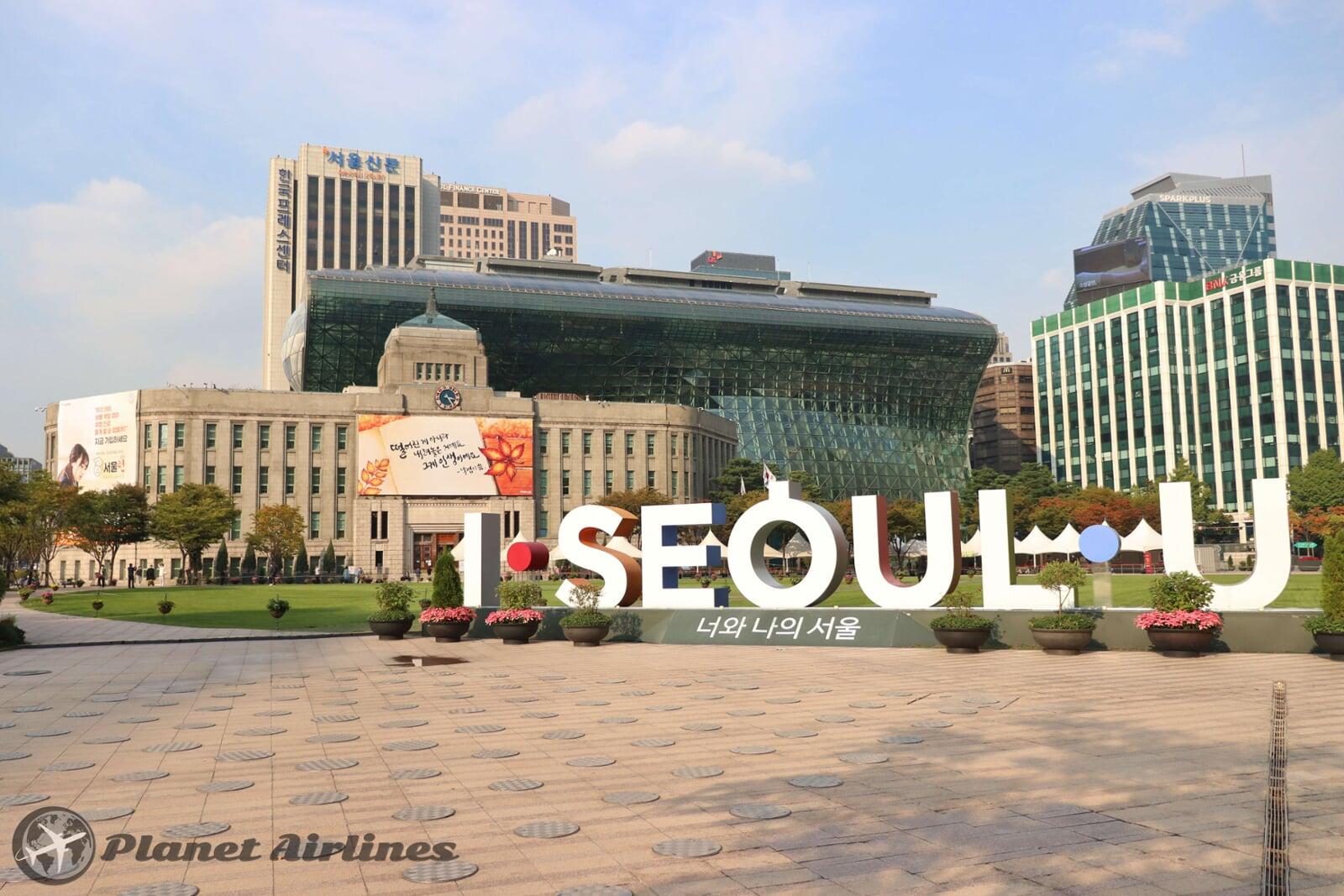
Seoul has a humid continental/subtropical transitional climate with four distinct seasons. Temperature differences between the hottest part of summer and the depths of winter are extreme. Summer (June to August) brings very hot, humid weather with average high temperatures soaring as high 35°C on occasions; in winter (December to February) low temperatures can drop as low as -15°C. But mostly Winters average around -5C° and 6C° in Seoul.
The most pleasant seasons in the city are spring and autumn, when blue skies and comfortable temperatures are ideal to be out exploring the city.
However, in Seoul, you can experience heavy rainfall, most of it falls in the summer monsoon period between June and September in the evening times.

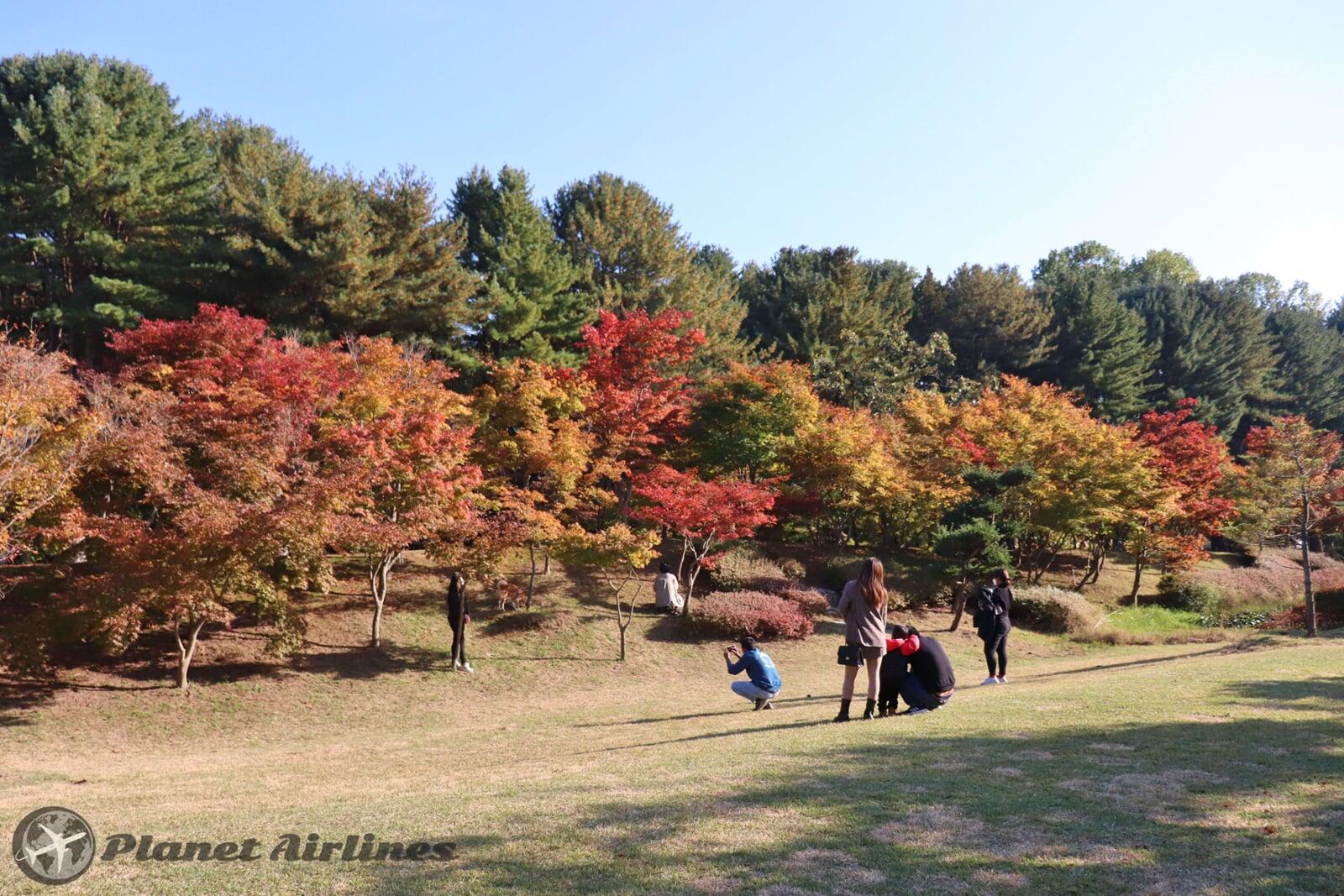
Arriving to Seoul by air is easy, straight forward and comfortable to take public transportation after arrival. There are two main airports in the city:
- Incheon International Airport (ICN): After clearing immigration and collecting your baggage, the arrivals displays clear signs to take the subway called (AREX) which links the airport to the city centre and also connecting to the other airport (Gimpo). The express metro line (AREX) which has a few stops along the way is extremely efficient and leaves every 10 minutes. Cost is 4.150KRW (€4) When you arrive you can link to the main subway lines or continue your journey by train for example as it arrives to the main train station. Also there is KTX (High Speed Rail) which in half the time reaches the main station, but costs double the price (12.500KRW). Currently there is also the construction of the Maglev, (Magnetic Levitation), but it doesn't reach the heart of the city yet.
- Gimpo International Airport (GMP): Is the secondary airport in the city, which serves mostly domestic cities, but also a host of international popular destinations. After collecting your baggage, also head for the signs for the subway which not only connects to (AREX) the airport express line but also connects with line 5, 9 and the Golden Gimpo line. Taking the express line costs 1800KRW into Seoul main station. You can also take busses from Gimpo if you're destination is in the outskirts of the city. 601 and 605 are the ones that connect to the city centre. Busses cost 1250KRW.
Within Seoul, public transportation is very easy to follow. The metro is very advanced and reaches all areas, ideally suited to visitor key sights. You can pay for single tickets or use a T-Money card which stores the credit and it's easier to use if you travel often. The T-Money card can be purchased in major stations or at the airport and costs 4000KRW. It is also possible to download the APP from your online store and use mobile tickets and load money on to your phone using a card. (there is small fee each time you load money onto it). If you prefer to take single tickets or tokens, these are issued with a fee which is returned to you once you deposit your ticket again at the machines.
The metro is the most common way to travel in Seoul, specially in the evening time or early morning. It's very simple to navigate, when you need to transfer there are specific sounds and colours for each line which help you identify the stations. For more information visit Metro Seoul. You can download the map below.
If you like to see where you are travelling and enjoy taking busses, this is also a very convenient option in Seoul. As long as you take the busses, after 9am and before 4pm. Rush hours tend to be quite slow on the busses and many people onboard. The local busses can be identified by being blue or green colour. The cost starts from 1250KRW and you can pay with your T-Money card or APP. Red busses connect the city centre with the outskirts of the city and cost 2850KRW but they offer quick services using the highways and are more comfortable. But check their timetables if you are planning to take them to more distant places.
There is also a night bus network in Seoul which comprises 9 routes. The fares cost 2100KRW. For more information please check https://news.seoul.go.kr/traffic/busstop?lang=en
✔️Tip: Taking the metro or bus in South Korea and then transferring mode, will give you a free transfer if the change happens within 30 minutes. (Bus to Metro or vice-versa). This can be done up to a maximum of 3 times. So you can can potentially travel to 3 different places and only pay once!



A trip to Seoul is full of surprises, revealing a city of towering skyscrapers and sleek freeways that preserves a hidden treasure of ancient palaces, temples and beautiful gardens. Although Seoul is one of the most high-tech cities in the world, the traditional culture remains remarkably intact despite the competitive modernity, thanks to decades of relative isolation. Society is modern at a first glance, but at the same time there are deep roots in tradition and family values.
Seoul is the ideal city, to start any trip first trip to South Korea, as it offers the great advantage to be close to major airports, high speed trains, which gives great connectivity to the rest of the country. It is also a good location to visit the DMZ, as tours start from Seoul and reach the safe perimeter line with North Korea within 90 minutes drive.
But there is no need to travel far, within Seoul, curious travellers can go under the shinny surfaces of the modern city and will delight with many markets, shops and alleys that sell every kind of good or necessity. Above ground, the downtown boasts plenty of traditional buildings and bustling markets. The city is home to three UNESCO World Heritage Sites.
Apart from the cultural wealth, travellers will find the nightlife varied and energetic, and touristic amenities are efficient, organised and clear.
To discover this great city, we have put together some of the best places to visit below:
- The N Seoul Tower, located on Namsan Mountain in central Seoul. Measures 236m and it's the highest point in Seoul. But if you consider it from the base of the city, it stands almost 500 meters above the city. The communications and observation tower provides dramatic views of the city from its great location. A cable car can take you up the side of the mountain to the base of the tower. From here, you can go up in the tower and visit any one of four observation decks, one of which is a rotating restaurant. However, many locals (and travellers) will walk to the tower which has a one way traffic system that ensures there is always enough space for joggers, walkers and cyclists who wish to climb the hill. There is also a bus that takes you to the top of the hill, take bus 01 (1150KRW) from Chungmuro Exit 2. (Lines 3,4).
To buy tickets and prices you can check at nseoultower.co.kr
✔️Tip: On the way back from the tower, you can walk down the hill instead, the trail which is located next to the cable car is easy to manage and gives some great views of the mountain, the city and the tower as well!
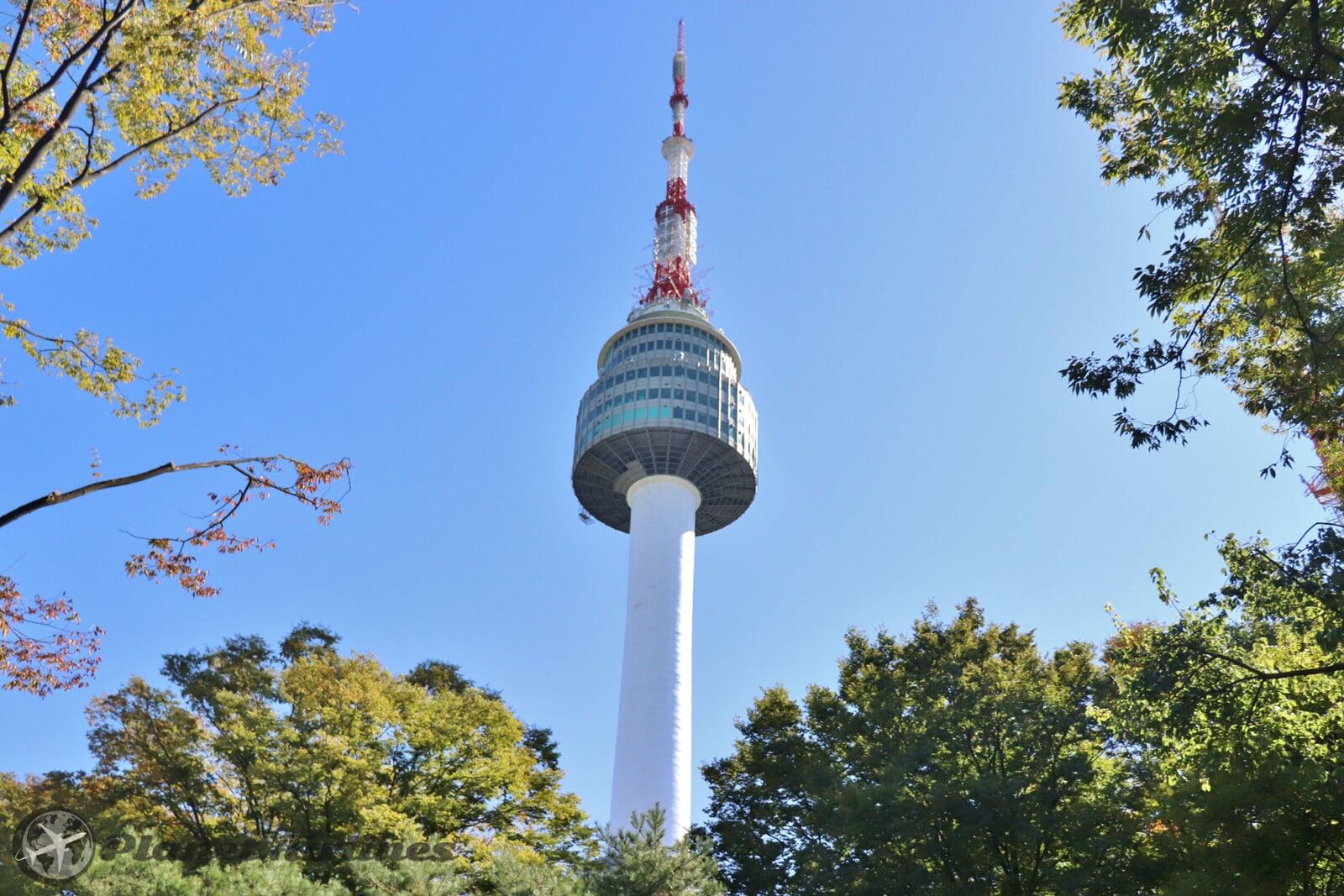
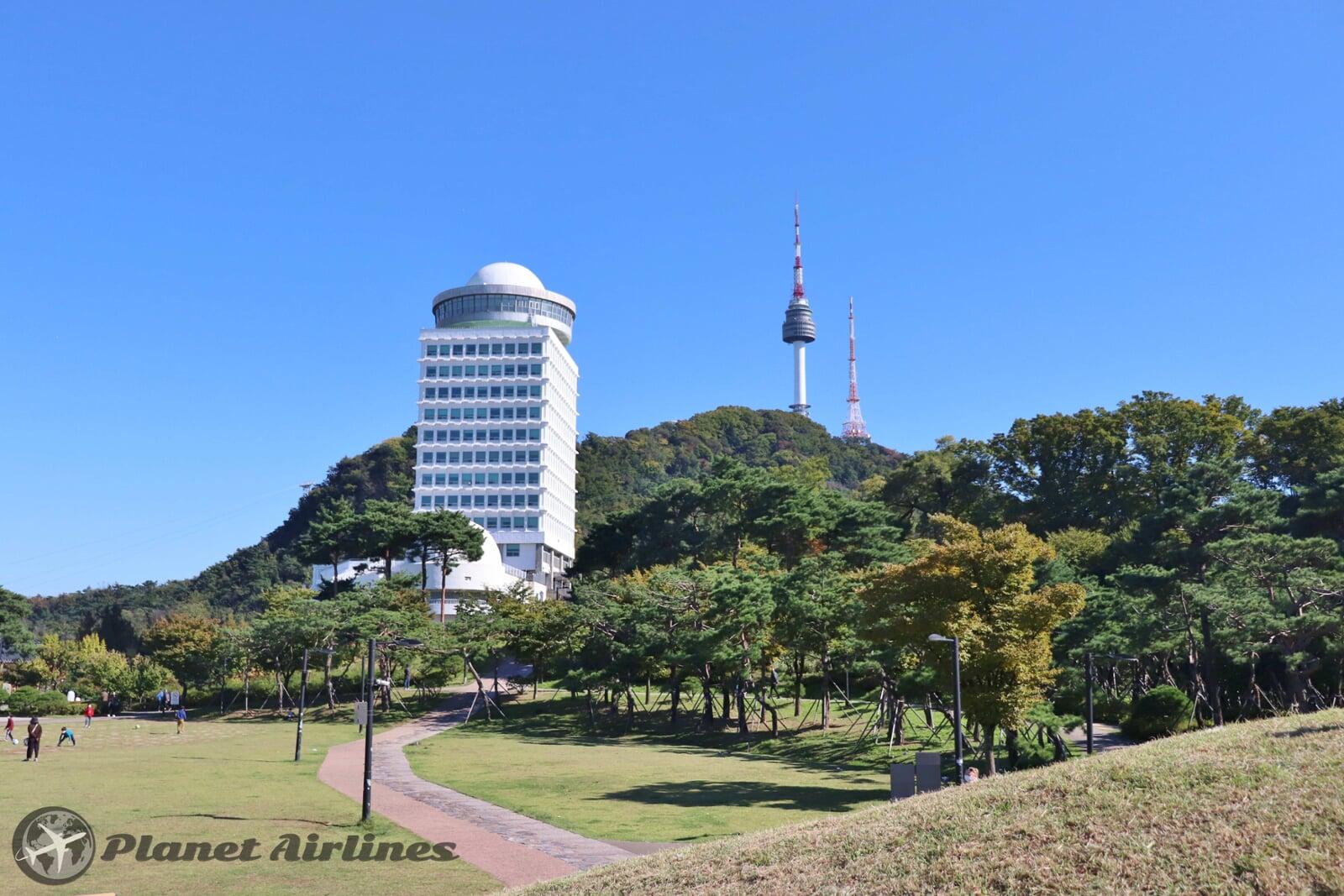
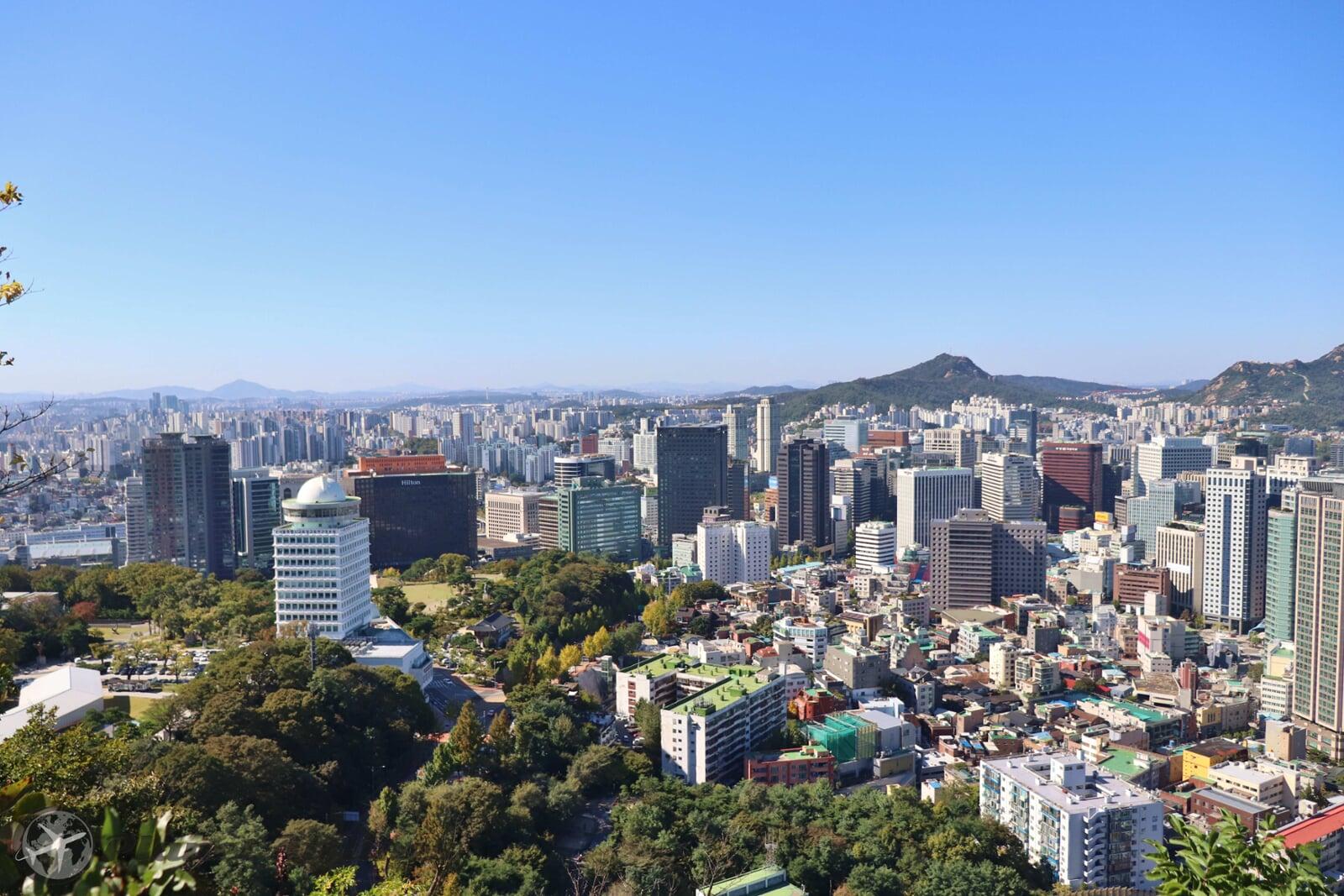
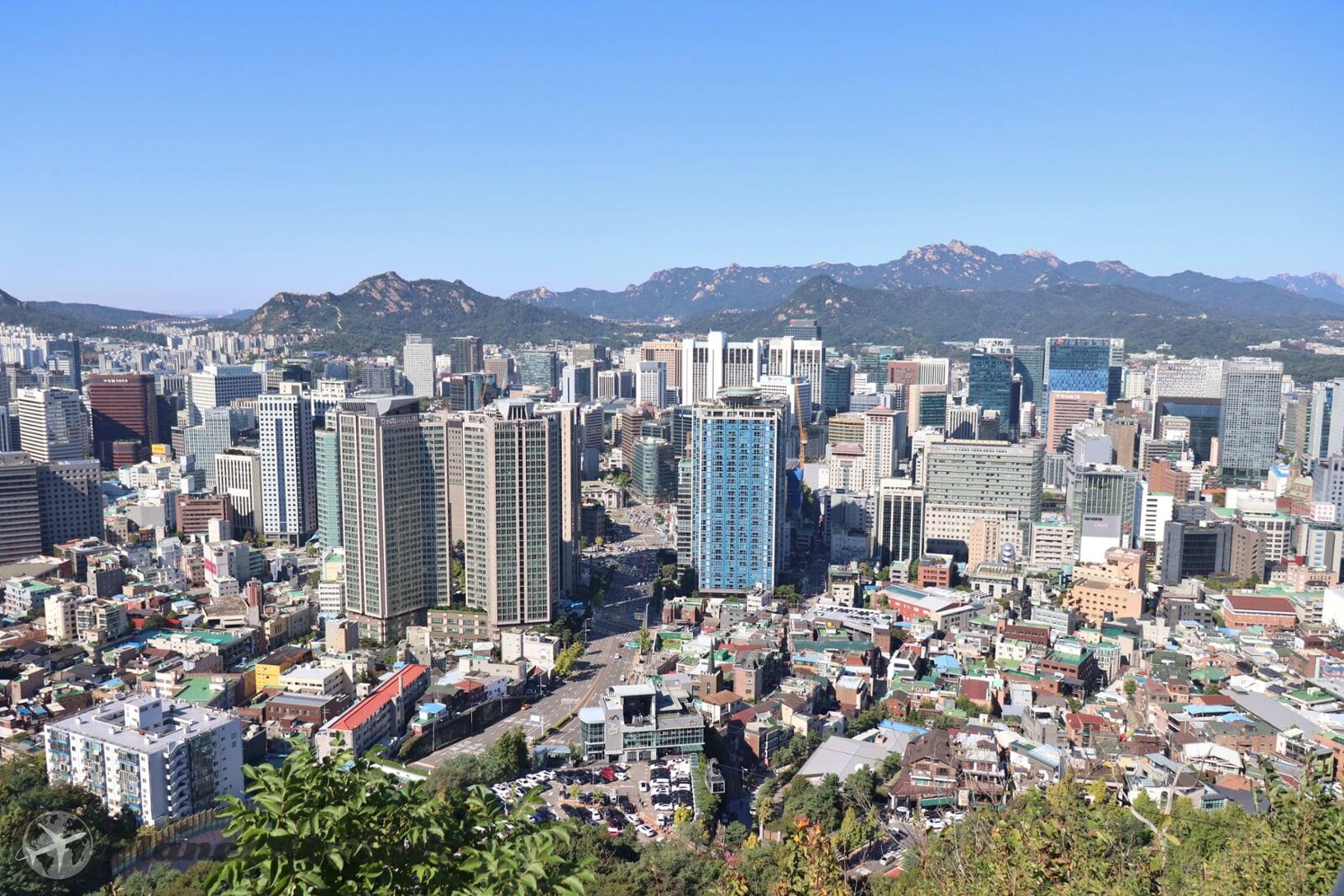


- Gyeongbokgung Palace, first built in 1395, Gyeongbokgung Palace is the largest of Seoul's five grand palaces built during the powerful Joseon dynasty. Destroyed and rebuilt several times over the centuries, it was restored to its original glory after the Second World War and totally restored in the 1990s.
Within the palace grounds, you can also find the National Palace Museum of Korea and the National Folk Museum of Korea, and both are worth a visit. The palace museum offers the chance to see priceless antiques and artwork, as well as everyday items for cooking, cleaning, and daily life. The National Folk Museum focuses on items from daily life, as well as clothing and dioramas, to tell the story of the Korean people since prehistoric times. Admission applies to all places.
To get there, take the metro to Gyeongbokgung Station, exit 5.
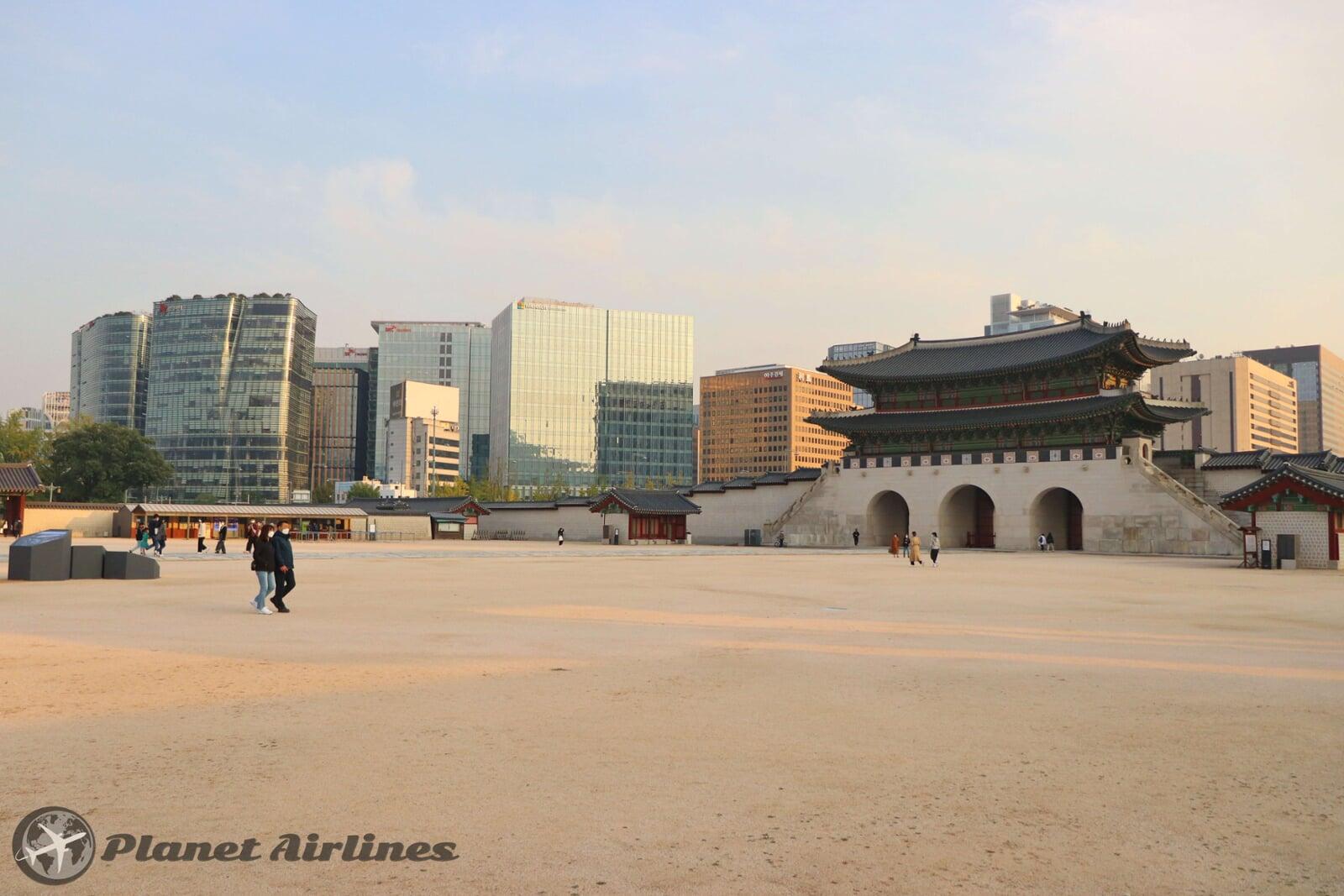
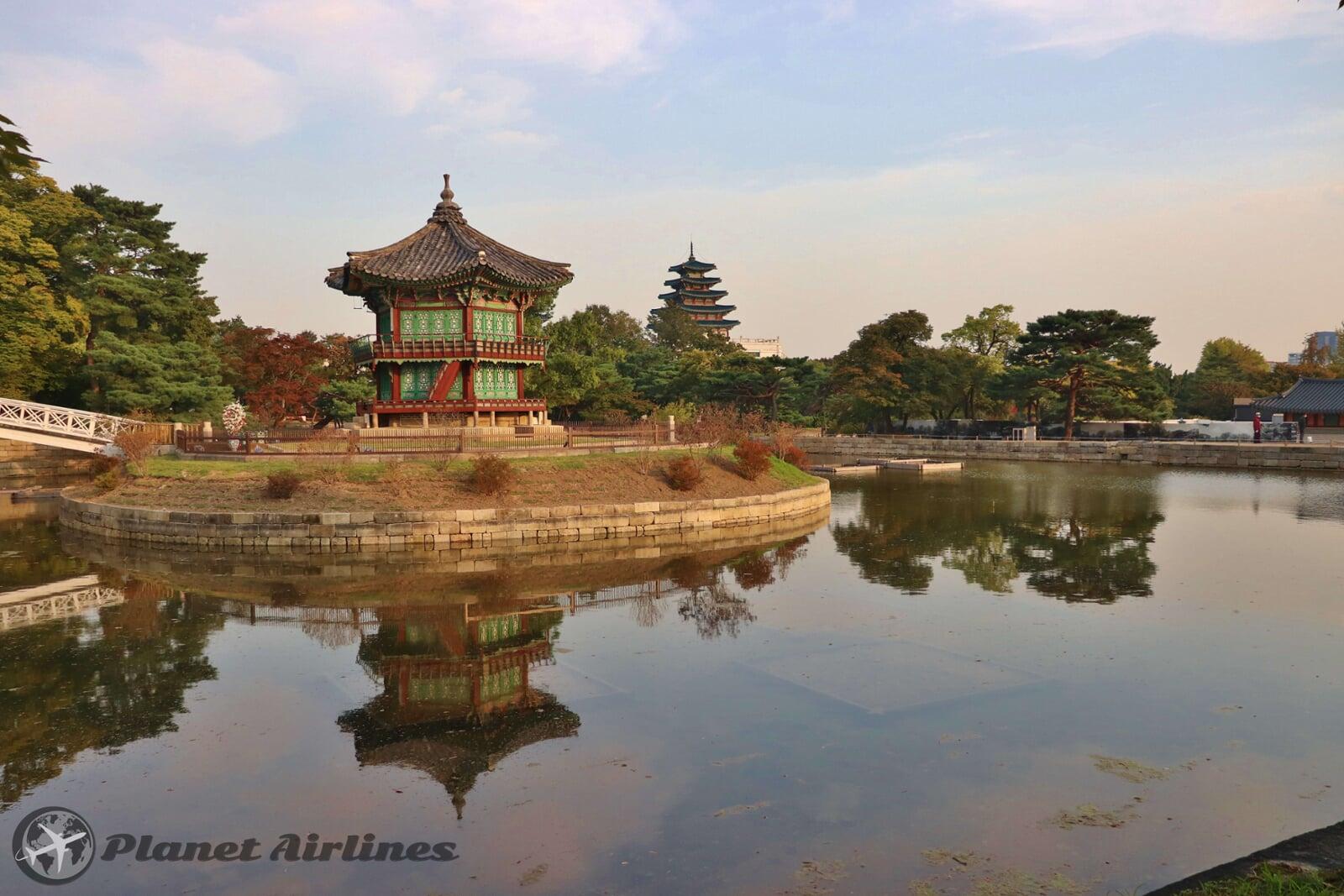
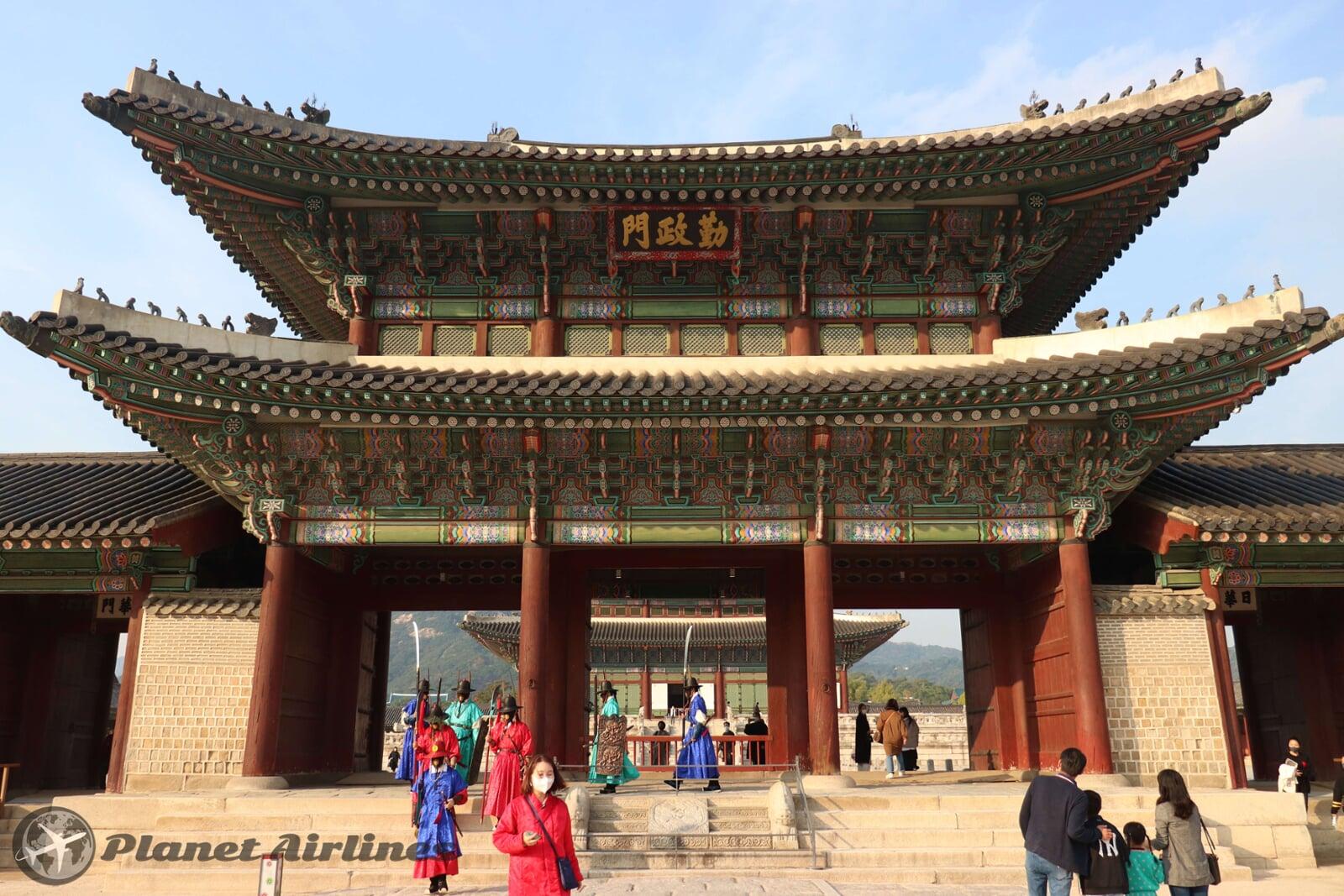



- Gwanghwamun Gate, is the main and largest gate of Gyeongbokgung Palace. It is located at a three-way intersection at the northern end of Sejongno, (This street which is worth walking all the way down as you will find many interesting buildings). Entering the gate is free and from here you can reach the Palace or the Palace Museum.
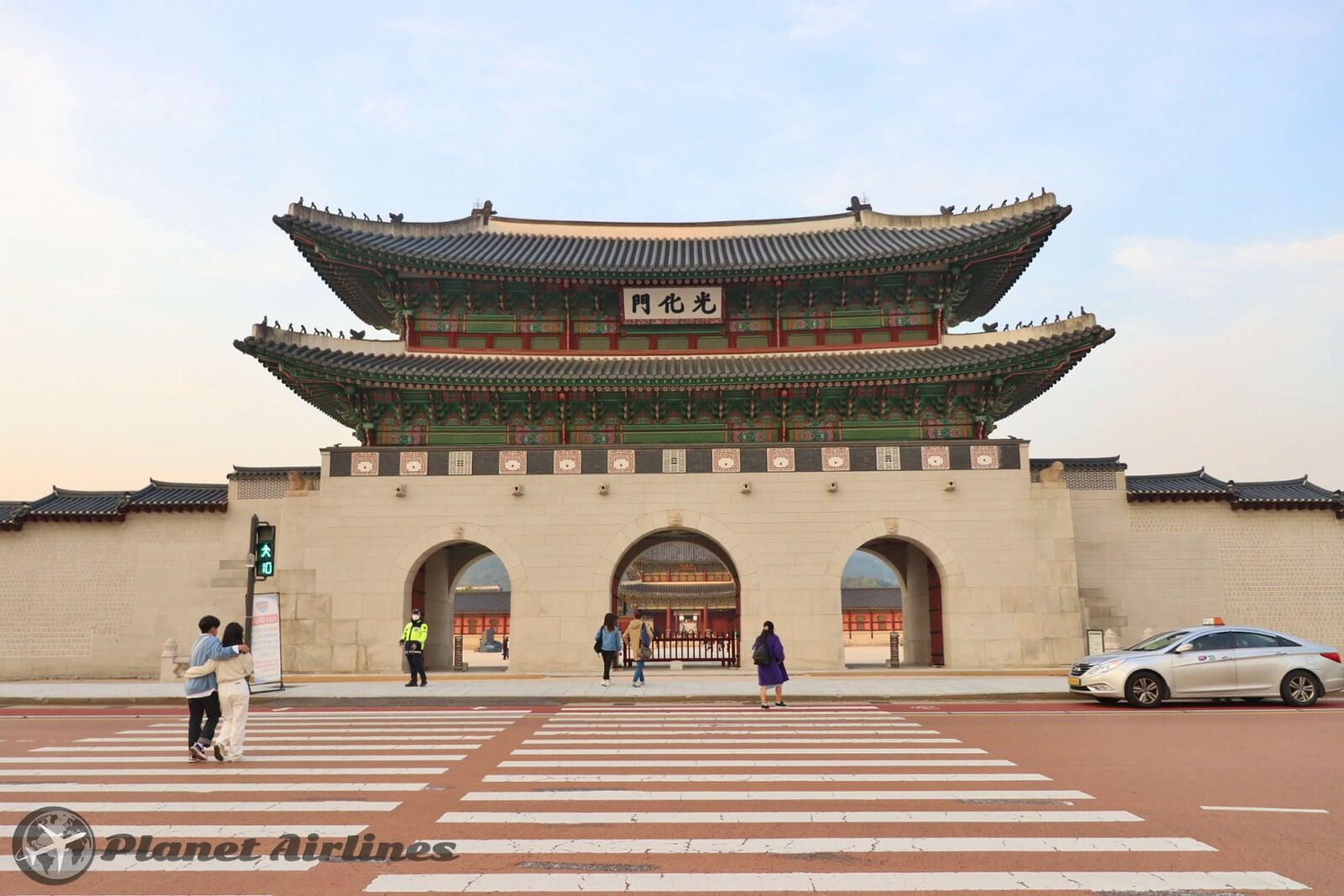
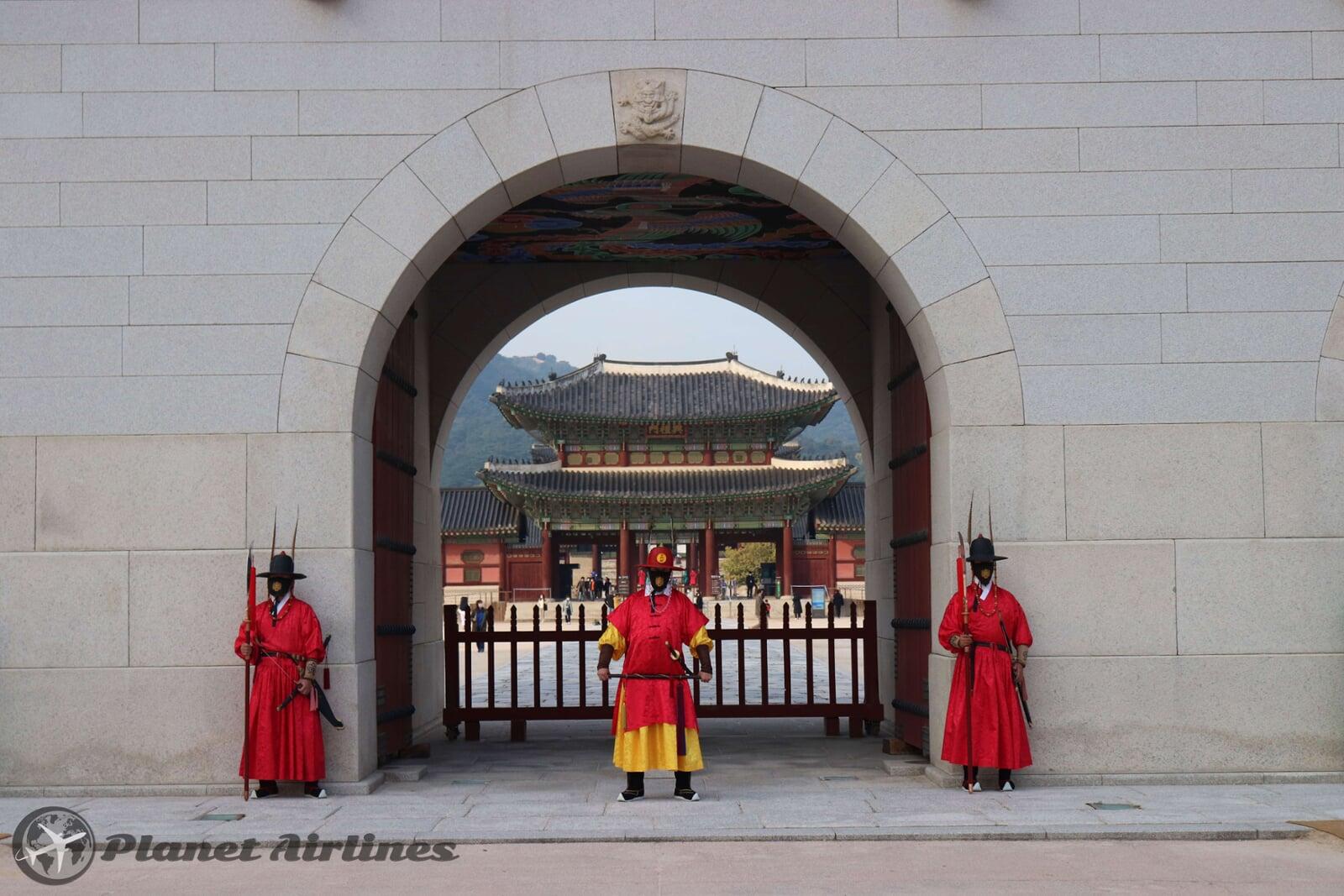
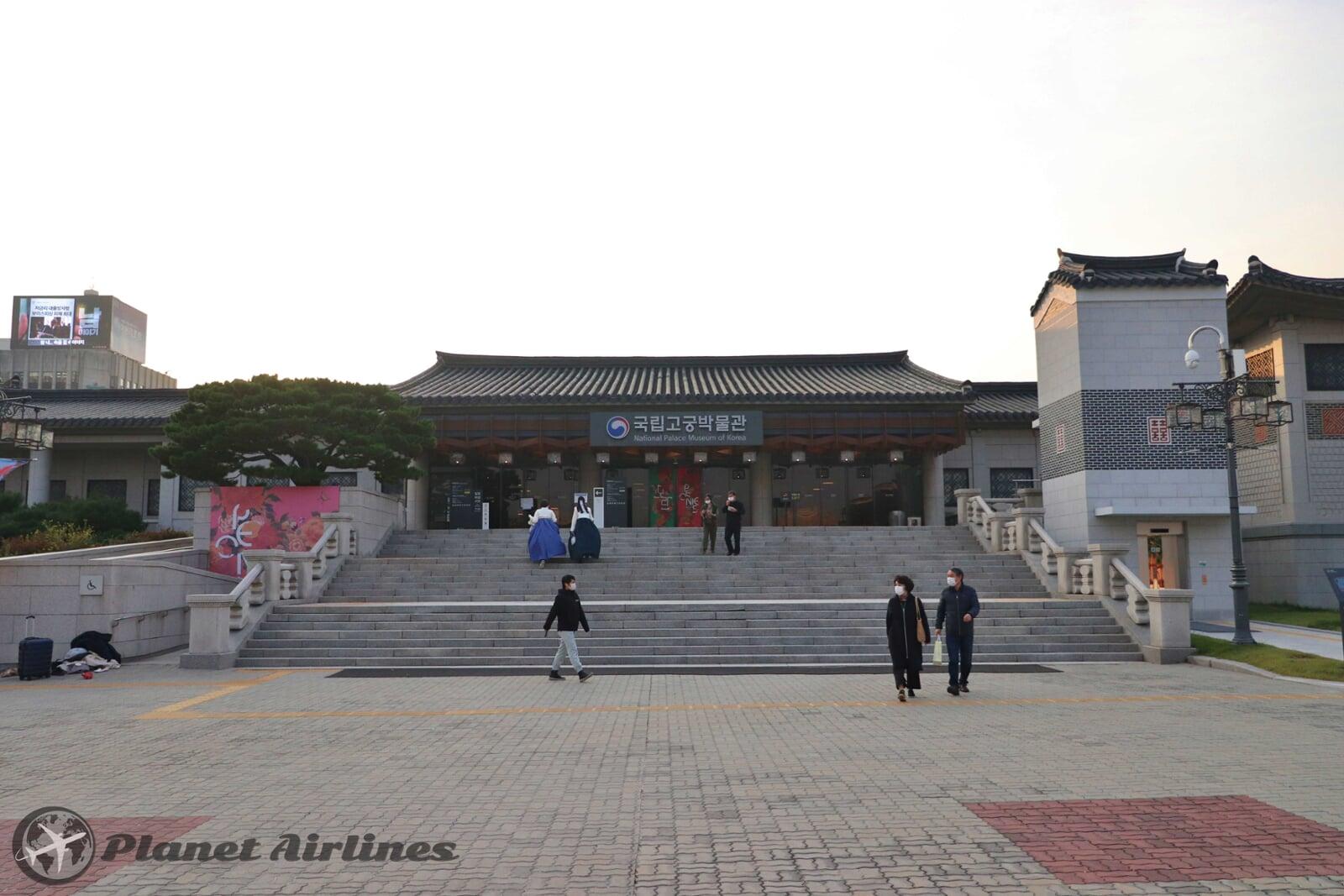
- Namdaemun Gate, known as the Sungnyemun, is one of the Eight Gates in the old Fortress Wall of Seoul. Though its official name is Sungnyemun, it is also popularly known as Namdaemun Gate due to its location at what was once the southern end of Seoul, but today more known for the Namdaemun Market (see below). As the centuries passed, Seoul grew in size but Sungnyemun Gate has endured through the ages. Construction on the gate was started in 1395 and completed in 1398. The gate is Seoul's oldest wooden structure but on Feb. 10th, 2008, much of the gate's wooden structure was destroyed by fire. Following several years of restorative work, Sungnyemun Gate can now be enjoyed in all its glory.
To get there, take metro to Seoul Station, exit 4 and walk for about 5 min.
✔️Tip: Come and watch the guard performance at the gate! Guarding the city was one of the important military ritual in Joseon dynasty period. Defending the capital city was the most important issue in Joseon dynasty period and it proved a serious problem especially during the reign of King Seonjo after experiencing Japanese invasions of Korea. Guard Performance is military ritual in Joseon dynasty period costumes. Starts at around 10 a.m to 4 p.m. (Every day except Monday).
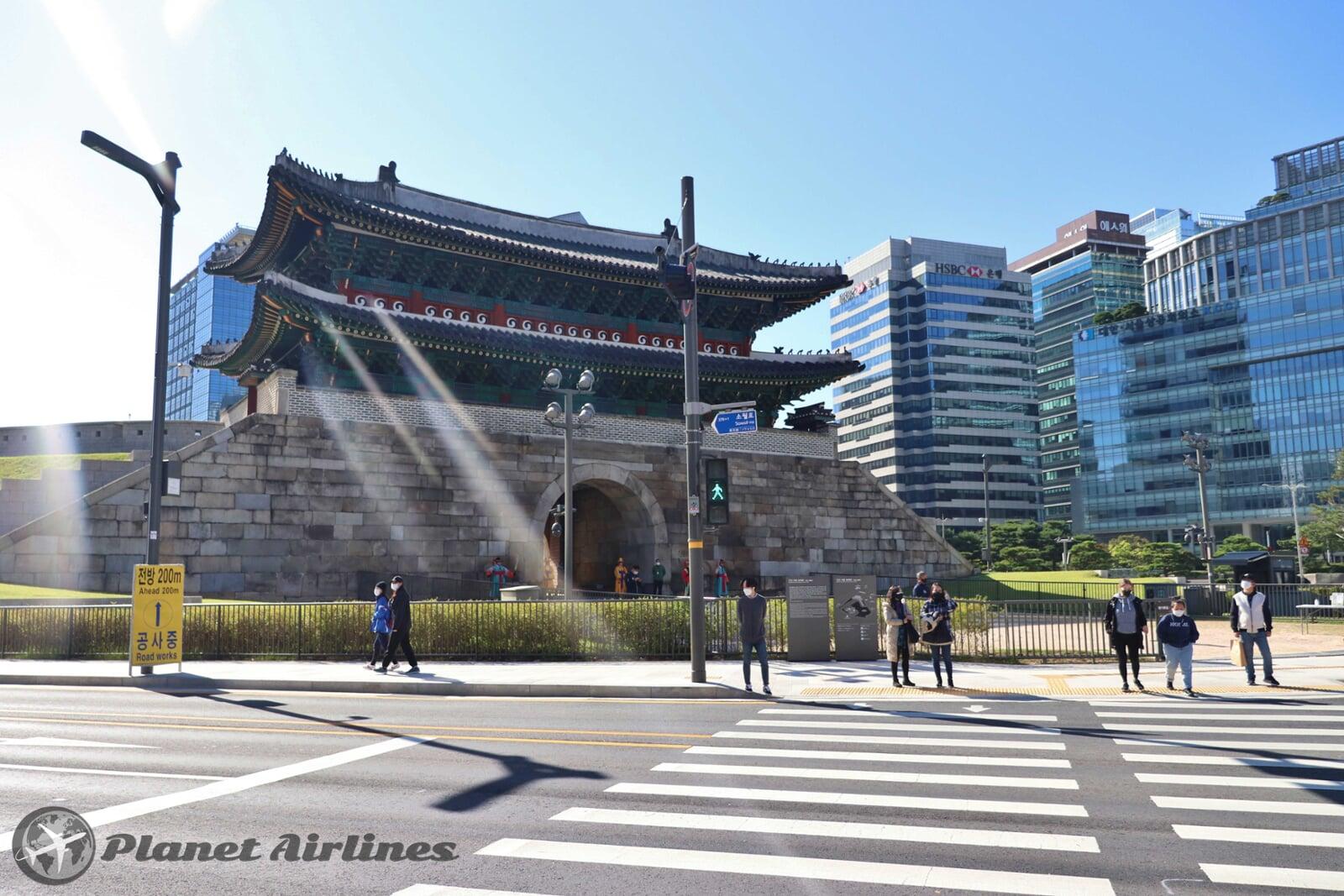

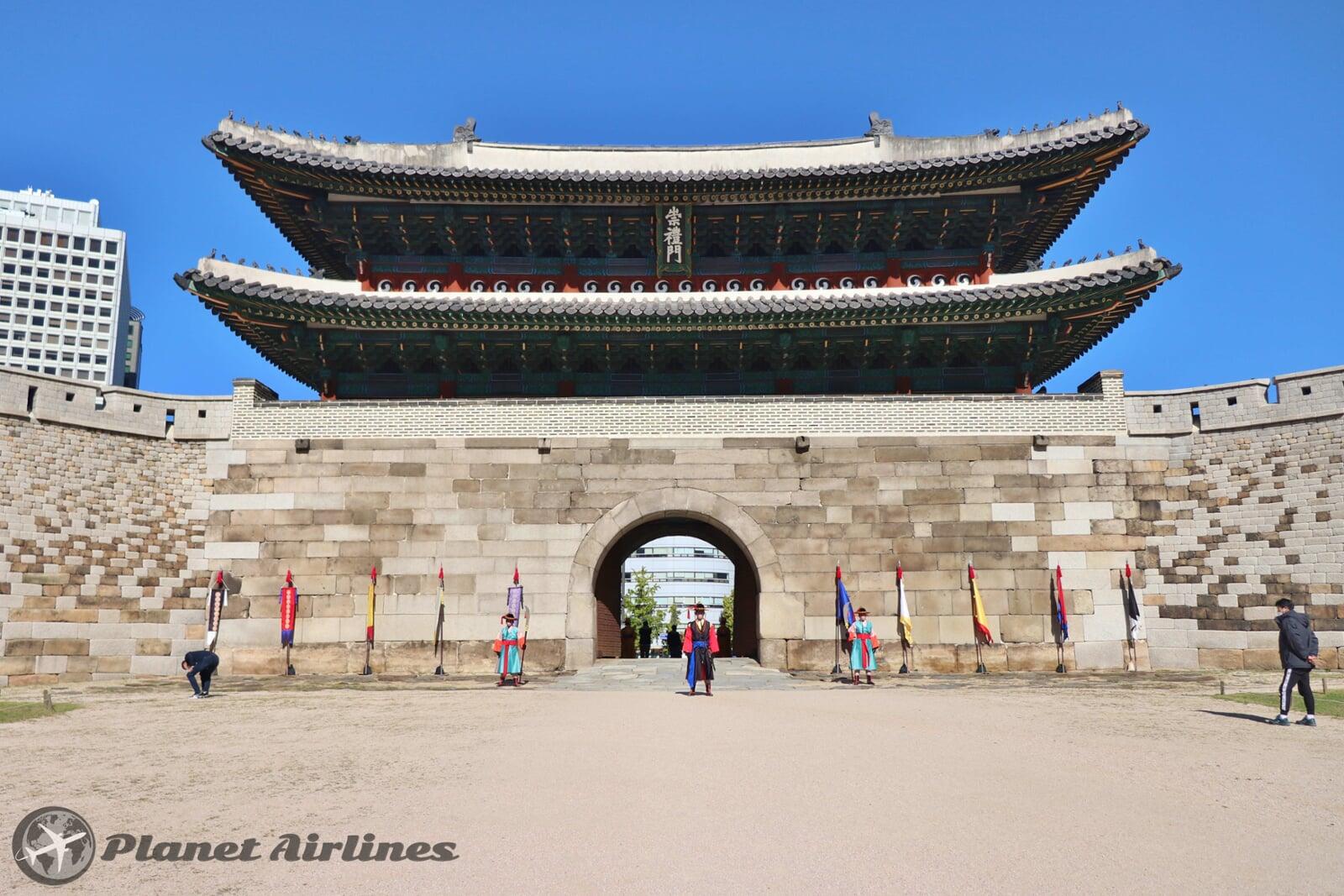
- Namdaemun Market, located next to the Namdaemun Gate (above), after which it is named. It's the oldest and largest market in South Korea, dates back to 1414.It sells everything from housewares and fabrics to flowers and stationery. The multi-storey buildings offer thousands of shops, as well as endless numbers of street-vendor stalls and great food stalls to refresh and eat tasty local snacks!
Get there directly by subway line 4, Hoehyyeon Station, exit 5.



- Heunginjimun Gate: literally means "Gate of Rising Benevolence", it's another of the Eight Gates in Seoul. It was built to protect Hanseongbu, which historically housed important government facilities. Heunginjimun Gate was the gate on the east side of the outer wall of Seoul Fortress among eight gates. It is referred to as Dongdaemun Gate as well. The gate was constructed during King Taejo’s 5th year in 1396, remodeled during the reign of King Danjong in 1453 and was newly built in 1869 during the sixth year of King Gojong’s reign in 1869.
Outside of the fortress is the half-circle shaped Ongseong, a small wall, to protect the gate. One of the unique factors of Heunginjimun Gate is that it is the only gate among Seoul’s eight to have this feature, Ongseong, further exhibiting the style of construction used during the late Joseon period.
To get there, take metro to Dongdaemun Station, line 1, 4 Exit 7.
✔️Tip: Next to this gate, you will find an interesting trail walk that takes you over the Heung-Injimun Park, offering some great views of the Heunginjimun Gate. Continue walking up and you will reach Naksan park. Continue walking down and head to Hyehwa, where you can find multiple dinning options, cafe, shops and bars!






- Dongdaemun Design Plaza: located very close to the Heunginjimun Gate (above) this modern building is known by its initials, the DDP is a very cool design centre in Seoul's Dongdaemun area. Also known for its shopping; there are a lot of department stores and discount clothing and houseware stores in the area. The silver, orb-like flowing DDP building looks like something from outer space. It was designed by the late Iraqi-British architect Zaha Hadid, considered one of the great female architects of the modern era. In perhaps Seoul's ultimate contrast, there are ruins of the ancient city fortress preserved just outside the front entrance of the design centre.
The complex is filled with showrooms, work spaces, offices, and design studios. At night, the design centre comes alive, the highlight being 25,550 white LED roses that light up.
To get there, take the subway to Dongdaemun History and Culture Park, line 2 and 4, exit 1.


- Deoksugung Palace: it was initially not a royal palace, but a residential home of Grand Prince Wolsan (1454-1488), the older brother of King Seongjong (1469-1494) of the Joseon dynasty. It wasn't until 1593 that the palace was used as a temporary palace of the royal family after their home was burned down during the Imjin War. It became a proper palace when Gwanghaegun (1575-1641) ascended to the throne and gave this royal residence the name Gyeongungung Palace in 1611. Over the following decades, the palace alternated between being an official palace and a temporary residence. The name did not change officially to Deoksugung Palace, meaning the “palace of virtuous longevity,” until 1907. While the palace once encompassed a vast area with many buildings, the current palace grounds are just a small shadow of the prior splendour, with a few structures remaining that the visitors can see, but most are closed to from entering inside. The fee to access is 1000 ₩.
To get there, take the subway to City Hall , line 1 or 2 exit 2.
✔️Tip: On the left hand side, there is a small street which borders the Palace Wall. Walk this street during the Spring, Fall or Xmas for some extra special atmosphere and beautiful sights as there are trees and plants which will change colour as the seasons pass. Additionally there might be buskers or small markets selling craft works.




- Changgyeonggung Palace and Changdeok Palace: If you want to visit more cultural buildings from Seoul's history, these two palaces provide ample opportunity to walk around and explore the ancient traditions and customs which took place here. You can visit the two, which interconnect each other. Go by bus 151, 171, 172, 272, 601.
Changgyeonggung Palace, located in the heart of Seoul, was originally built as Suganggung Palace by the 4th ruler of the Joseon dynasty, King Sejong (r.1418-1450), for his retiring father, King Taejong. It often served as residential quarters for queens and concubines. During the reign of King Seongjong (r.1469-1494), the palace was renovated and renamed to Changgyeonggung Palace. It later became a park with a zoo and a botanical garden during Japanese colonial rule. The palace grounds remained this way until 1983 when restoration of its old grace was completed. Entrance fee is 1000 ₩.






Changdeokgung Palace, is a UNESCO World Heritage Site and one of the most well-preserved palaces of all the royal palaces from the Joseon Dynasty (1392 - 1910). This is where kings and their ministers discussed state affairs to effectively reign over the people, and where the royal family resided. The Palace was built in 1405 by King Taejong, the third ruler of Joseon. All palaces in Seoul were burnt down during the Japanese invasion in 1592 and Changdeokgung Palace became the first palace to be rebuilt in 1610. Since then, it became the primary palace for about 270 years where 13 kings including the last monarch dealt with state affairs.
The whole Changdeokgung compound covers an area of about 462,000 square meters, and the Rear Garden also known as the Secret Garden accounts for two thirds of the total grounds. (extra dmision applies).
Changdeokgung Palace was designated as a UNESCO World Heritage Site in 1997 and is regarded as a masterpiece of Korean palace architecture where the buildings are in perfect harmony with the natural setting. Entrance fee is 3000 ₩. You can exit from the Donhwamun Gate where transport options are available.



- Jongmyo Shrine: it was the primary place of worship for kings and their queens throughout the Joseon dynasty. The compound is composed of various buildings in addition to the main hall. The shrine was built at the same time as Gyeongbokgung Palace, under the orders of King Taejo. The shrine is the site of the royal memorial service, called Jongmyo Jaerye, a national event that has been passed down since the Three Kingdoms period. The shrine was designated as a UNESCO World Cultural Heritage site in 1995, for its well-preserved ancient customs, such as memorial services and traditional music.
During the Joseon dynasty, the ritual was held on the first month of a seasonal change and the twelfth month of the lunar year, but was stopped during the Japanese colonial period. Now, it is annually re-enacted on the first Sunday of May. Entrance fee is 1000 ₩.
To get there, you can get the subway to Jongno 3 station, exit 11. Or by bus 101, 103, 140, 143, 150, 160, 201, 260, 262, 270, 271, 273, 370, 720, 721, 7212, 9301.




Ansan Mountain and trail walk: Ansan Jarak-gil is the country's first barrier-free mountain walking trail with gentle slopes, allowing visitors of all ages, young or old to experience walking through the woods. It is also accessible to those using wheelchairs and baby carriages entering near Seodaemun-gu Office. At an altitude of 296m, Ansan Mountain is relatively low compared to other mountains in Korea and yet you can still enjoy the sights and scenes of a Seoul's mountain.
There are multiple dirt trails leading to the summit of Ansan Beacon Mound (296m) in 30-45 mins. There are trails that are shorter in distance but steeper ascend to the summit, or you can take the longer route with gradual ascend.
Of course, if height is not for you, you can always stay on Ansan Jarak-gil (raised wooden deck trail) without having to make the ascend to the summit.
To find the trail, enter the path at the side of Lee Jina Memorial Library. The path is easy to follow as there are signs along the way and there is only one route. The path will eventually lead you to a road. From the road, you will be able see the raised wooden deck ahead, the entrance to Ansan Jarak-gil. Follow the sign for 'Ansan (Mt.) Top'.
The walk can be accomplished in an hour if walking at a moderate speed and taking some breaks. It's advised to take comfortable walking shoes, water, sun-glasses and sun protection is its sunny.
To reach there you can take the metro first to Dongnimmun Station (line 3) Exit 5. Walk behind the prison and enter the path at the side of Lee Jina Memorial Library.

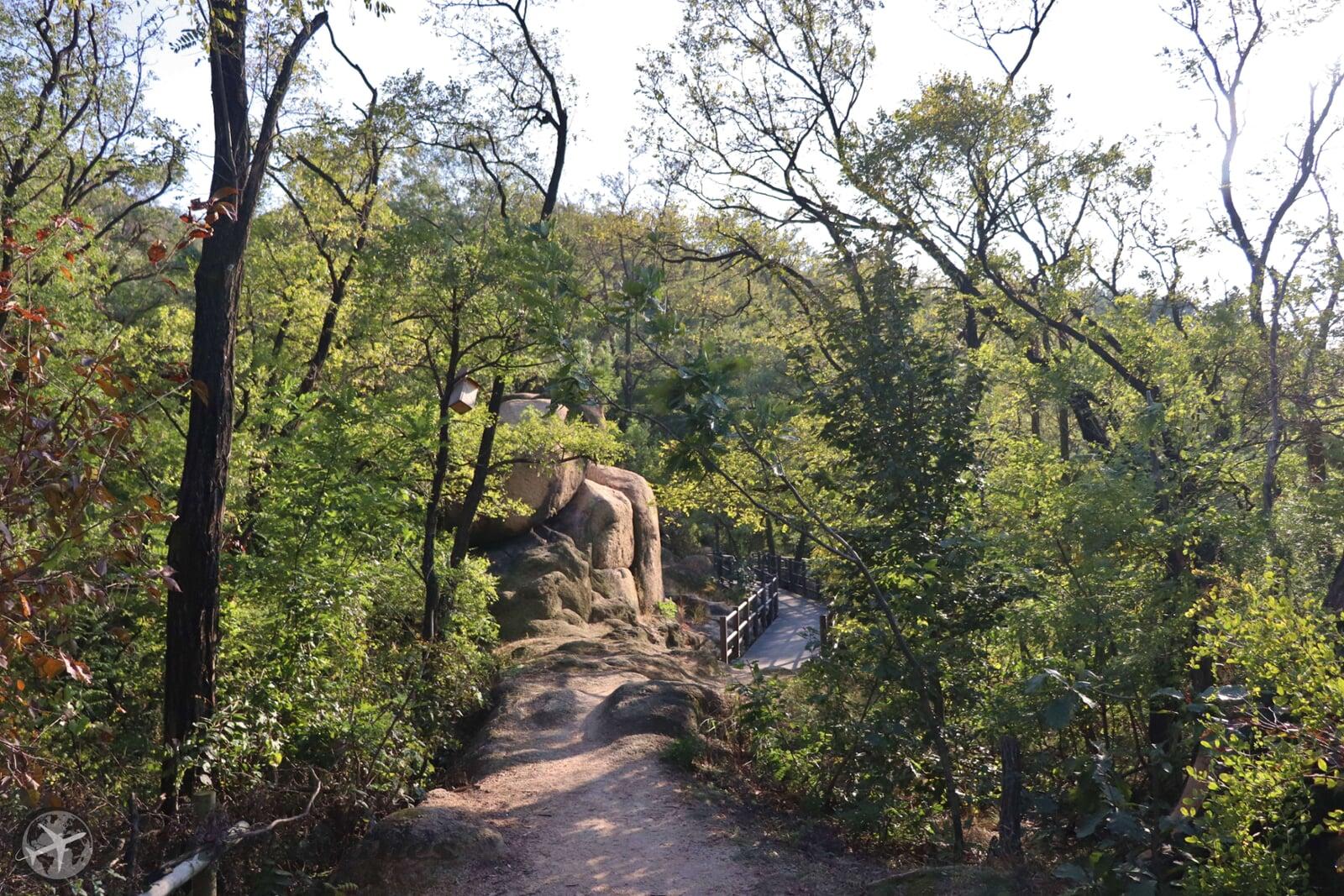
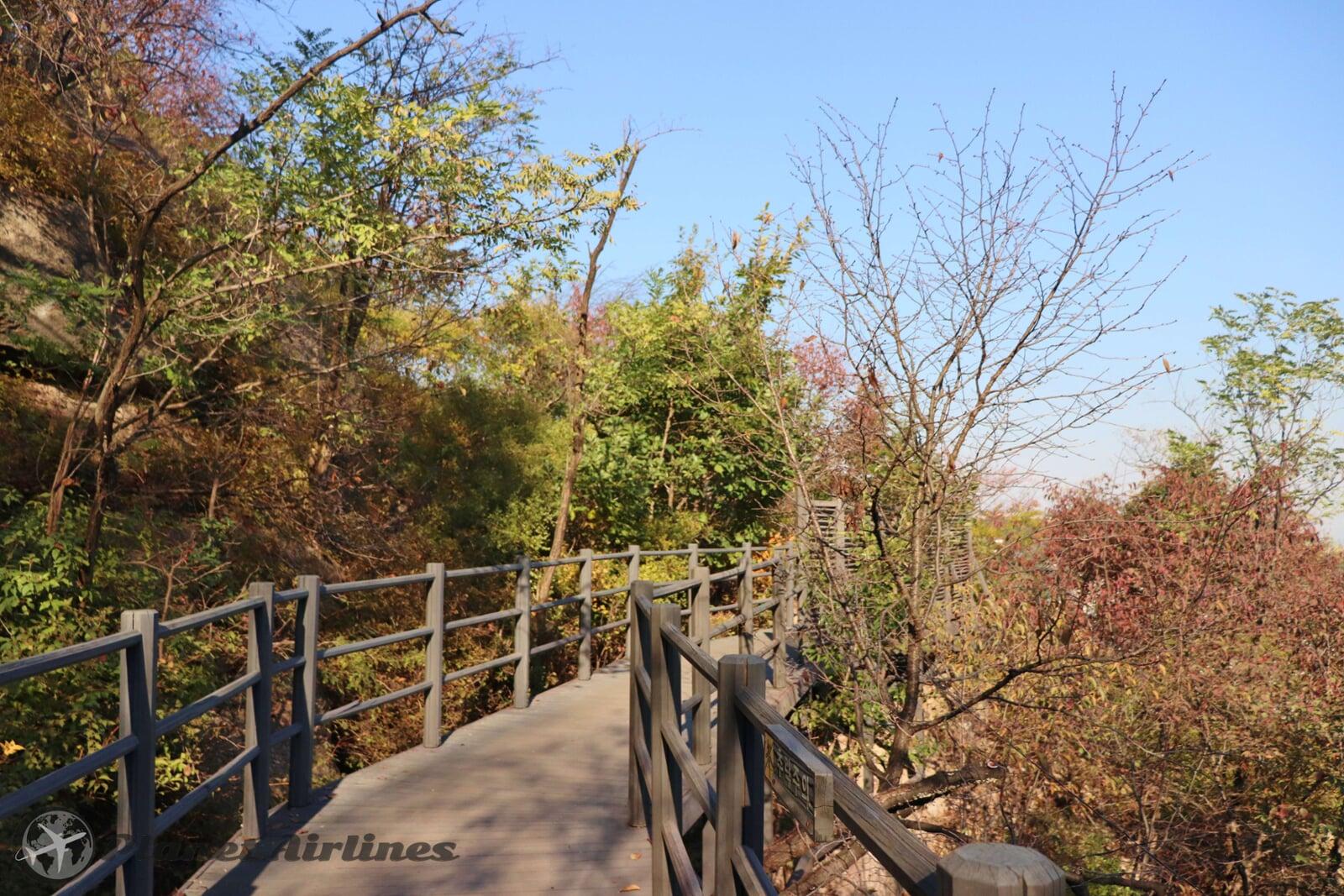
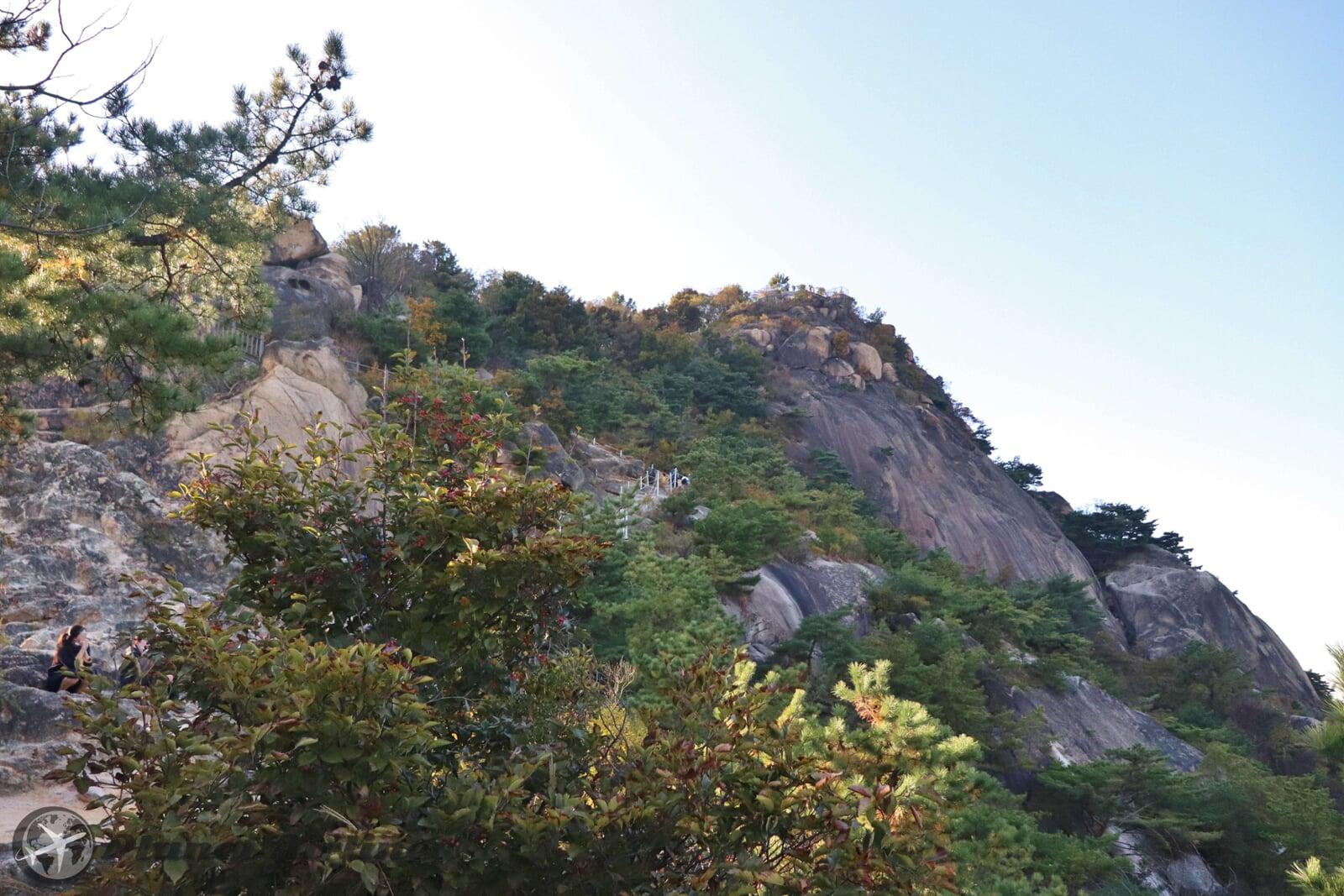

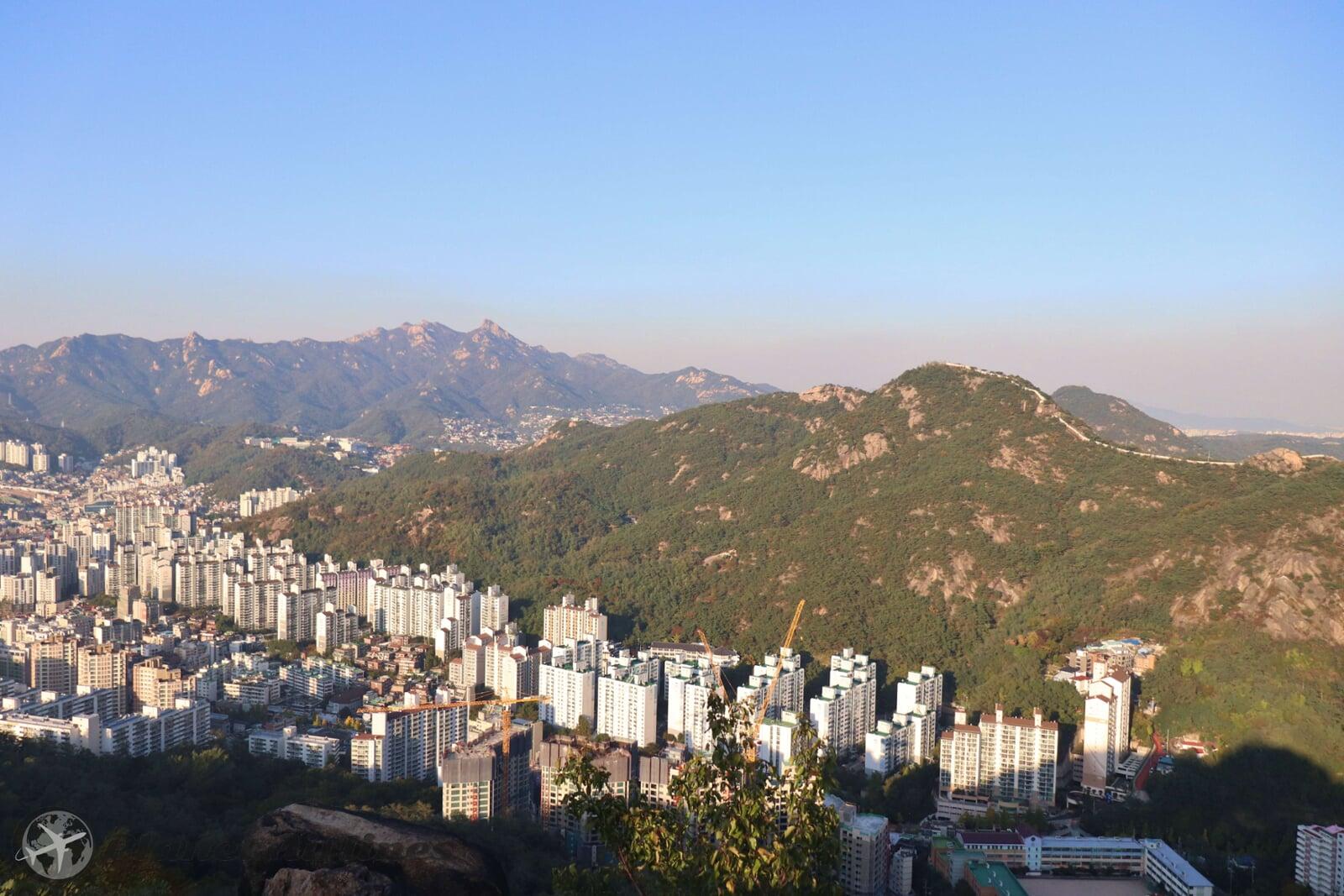
✔️Tip: Want to know more trail routes? You can check this comprehensive guide for more information! Koreatodo.com/best-hiking-trails-korea
- Gwanaksan Mountain Trail and Temple: Gwanaksan is a mountain to the south of Seoul. Gwanaksan`s ridges soar powerfully upward, so that it looks like the sharp backbone of a dinosaur, a shape that looks as if they could ward off bad energy.
Two major organizations are based near Gwanaksan. The campus of Seoul National University, considered Korea`s most prestigious university, has settled on the north side of Gwanaksan. The best way to climb the mountain for ordinary citizens used to be to follow the trail next to the main gate of Seoul National University, but now the university`s retaining walls and buildings have reduced the fun of using that trail. (see routes below)
The other organization is the Gwacheon Government Complex located on the western side of Gwanaksan. The town of Gwacheon spreads out once you pass Namtaeryeong, one of the key landmarks at the southern edge of Seoul. The view of Gwanaskan seen from Gwacheon is imposing and beautiful.
There are several paths to the top of the mountain. Though you can climb from east, west, south or north, many people choose the path starting from Gwacheon Park which is behind the Gwacheon Government Complex.
At the entrance of Gwacheon Park, is Gwacheon Hyanggyo, a Confucian temple and academy. From here, one heads toward the summit along the stream. Wooden stairs are provided here and there to make the climbing easier. The trail is uphill almost all the way. While climbing, you can see a pair of Jangseung, or Korean totem poles. There are also heaps of stones marking the way. While climbing, many Korean people pick up stones to add to these cairns or make small stone towers next to rushing brooks, on small cliffs and under big rocks, wishing for their desires to come true.
Gwanaksan`s biggest temple, Yeonjuam, famous for its association with the mountain, is located nearly at the summit (but you will need to walk a little longer and up hill for a little longer to reach the the upper shrine). Yeonjuam has its origin in "Gwanaksa Temple" founded by Uisangdaesa in 677. A humble shaped 3-storied stone pagoda stands on the front yard of the temple. Yeonjudae stands 400m away from Yeonjuam. This is the summit of Gwanaksan. Yeonjudae features diverse sharp and pointed rocks and a small Buddhist shrine sits on one of the dazzling cliffs.
A transmitting tower and a meteorological observatory have also been put up here. The latter is open to the public. The distance from Gwacheon Hyanggyo to Yeonjudae is about 3.2 km and it takes about 2 hours if you walk slowly.
It takes a full hour from the University base after you get off the bus and start walking on the trails, reaching Yeonjudae. It is an easier path, but it will start to get steep at parts and then you will have most of the walk up steps. Gwanaksan has numerous trails to choose from, and each trail gives different and unique landscape of the mountain, so its important you look at the maps and GPS's before you go to plan your route.
To get there you have two routes:
A) From the University: Take subway to Seoul Nat'l University Line 2, exit 3 and take bus 5511 or 5513 and get off at the Seoul National University "Institute of Construction Environment" building. 📍(about 13 stops). You will see the trail start here, which takes about one hour to get to the top. This is the recommend way to ascend to the temple.
B)From Gwacheon: Take the subway to Gwacheon Line 4, exit 7 and walk towards the Gwacheon Confucian Academy. You will see the trial to your right at the parking lot. (this route is recommend as the decent, however going up is about 2+ hours).
(Gwanaksan has two peaks; Gwanaksan, which has Yeonjudae on its top, and Samseongsan, which is home to Sammaksa Temple. If you want to travel from Yeonjudae to Samseongsan, you need to go over Palbong ridge. It is a tough climb to extend the walk to Palbong ridge. Generally, those who climb to Yeonjudae go down the mountain toward the main gate of Seoul National University, or to Gwacheon Park, or to Sadang Station. Note that the path to the university is very steep along the valley).
❗Attention: The walk up to the summit and the temple will take around 4-5 hours in total. You will need to start the walk in the morning or midday the latest if it's spring or Summer. Remember to take some snacks, water, sun protection, fully charged phone, sun glasses and adequate clothing, mountain shoes and walking sticks if you need that extra balance. The trails are suitable for all ages, but not for those in low fitness condition.












✔️Tip: Want to know more trail routes? You can check this comprehensive guide for more information! Koreatodo.com/best-hiking-trails-korea
- War Memorial of Korea: located in Yongsan-dong. Opened in 1994 on the former site of the army headquarters to exhibit and memorialise the military history of Korea. The building, concentrates its history around the Korean War (1950 - 1953) via extensive exhibits, film screenings, educational programs, and cultural events. The museum has thousands of war memorabilia, maps, paintings, military equipment, battle records, and memorial statues.
You can visit a virtual combat experience room and 6 indoor exhibition halls displaying historical relics and battle records. The Korean War Exhibition has 3 halls with exhibits detailing the history of the Korean War, the progression of the war and how a truce was eventually established. You can view black-and-white documentary footage (with English commentary) of the main battles and events of the Korean War as well as displays of over 20,000 artefacts and military equipment. The museum is free to access.
To get there, take busses 110A, 421, 740 or 03 which are the closest to the museum, or go by metro line 4 or 6 to Samgakji. Exit 12.
✔️Tip: Are you taking a trip to the DMZ? Visit this museum one or two days before your tour to get some theory knowledge before your trip. To then experience the sights and see with your own eyes the DMZ and look over to North Korea via powerful telescopes. Read more about the DMZ on the next tab below!






- Pink Muhly Grass: You might be curious why so many Koreans want to visit this plant during its highlight time in the Fall. It's relatively small form, glossy green foliage, and airy pink-red flowers are very attractive as a must see and picture perfect opportunity. You can find them in Seoul, next to the river, in single specimen plants or grouped in a native garden. However, they are spectacular when massed in a meadow or park. There are several spots to view this beautiful plant in Seoul, the closest in the city is located at Cheolsan Station (line 7, exit 1). Then walk towards the river and you will see the pink grass below you. As well, there are ample paths and trails to walk the river and enjoy some good views.
✔️Tip: Visit Yangju Nari Park for more Pink Grass fields. with different vast flower fields blooming beautifully in Autumn at Nari Park. Of which, the field with the highest popularity is the unique Pink Muhly Grass field. To get there take the subway line 1 to Yangju Station, exit 2, turn left upon exit. At the traffic light in front, cross the road to the bus stop on the left. Take Bus 80/77-1, alight at either Haedong Village 해동마을 stop (close to flower field) or the next stop, Nari Park.
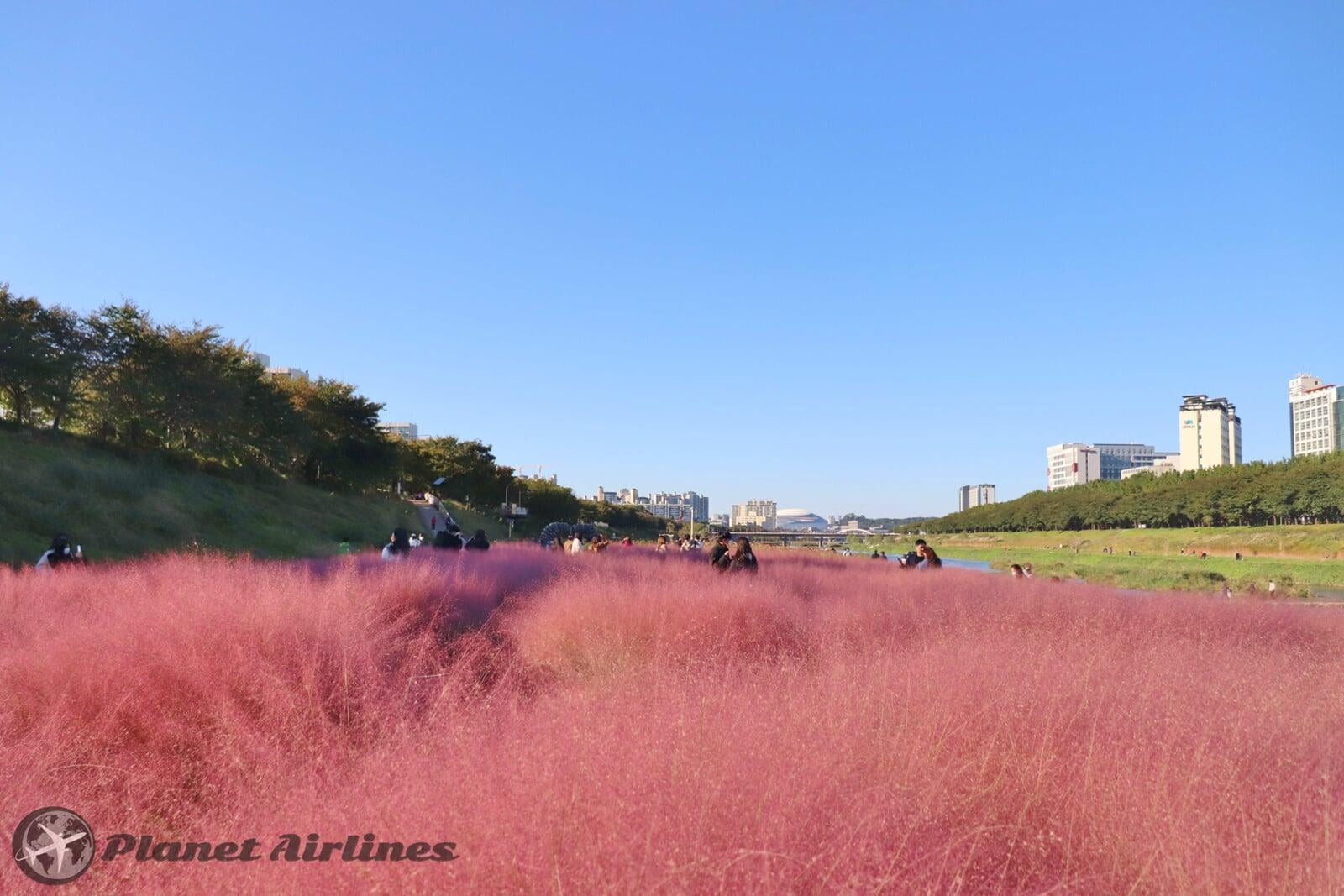
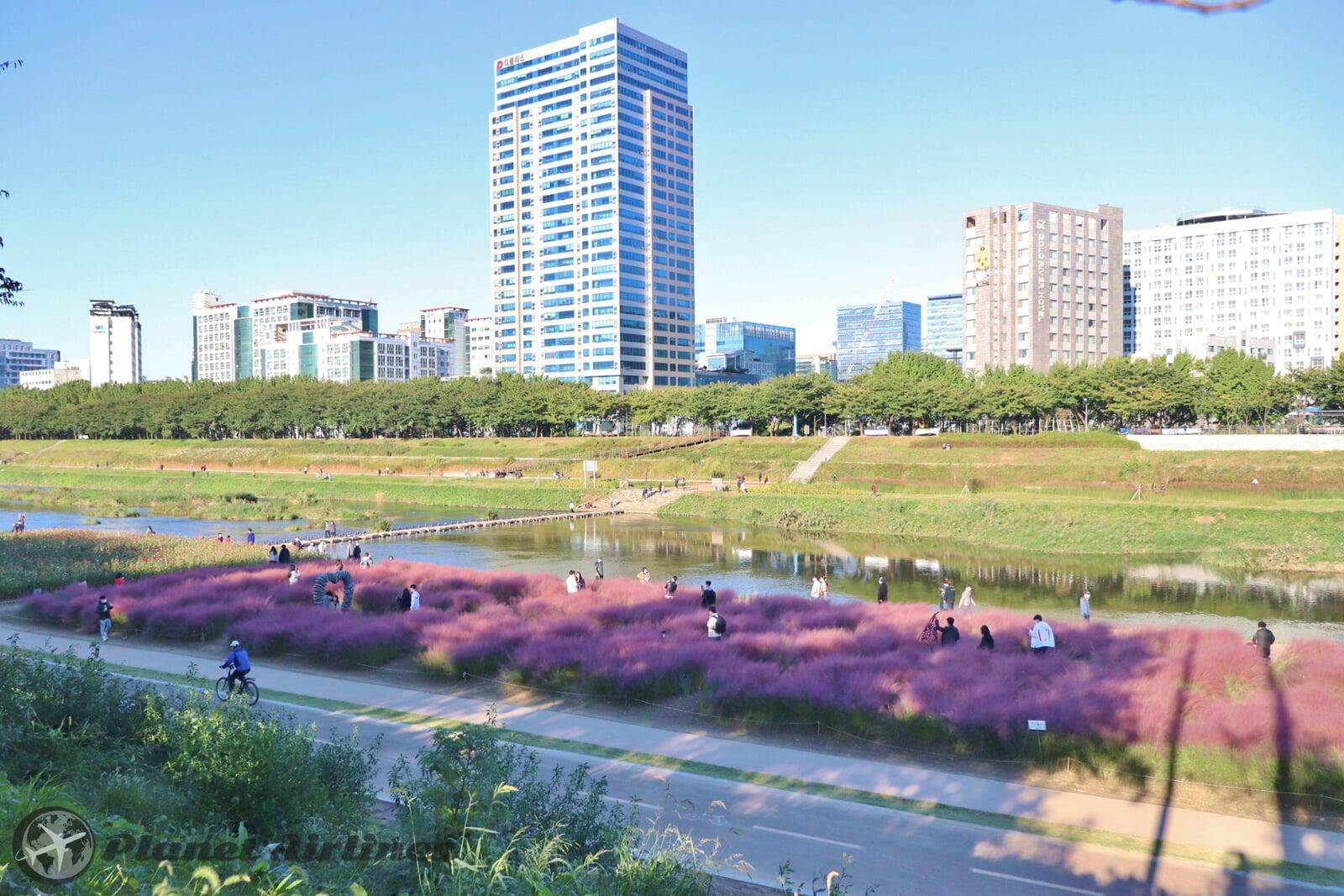
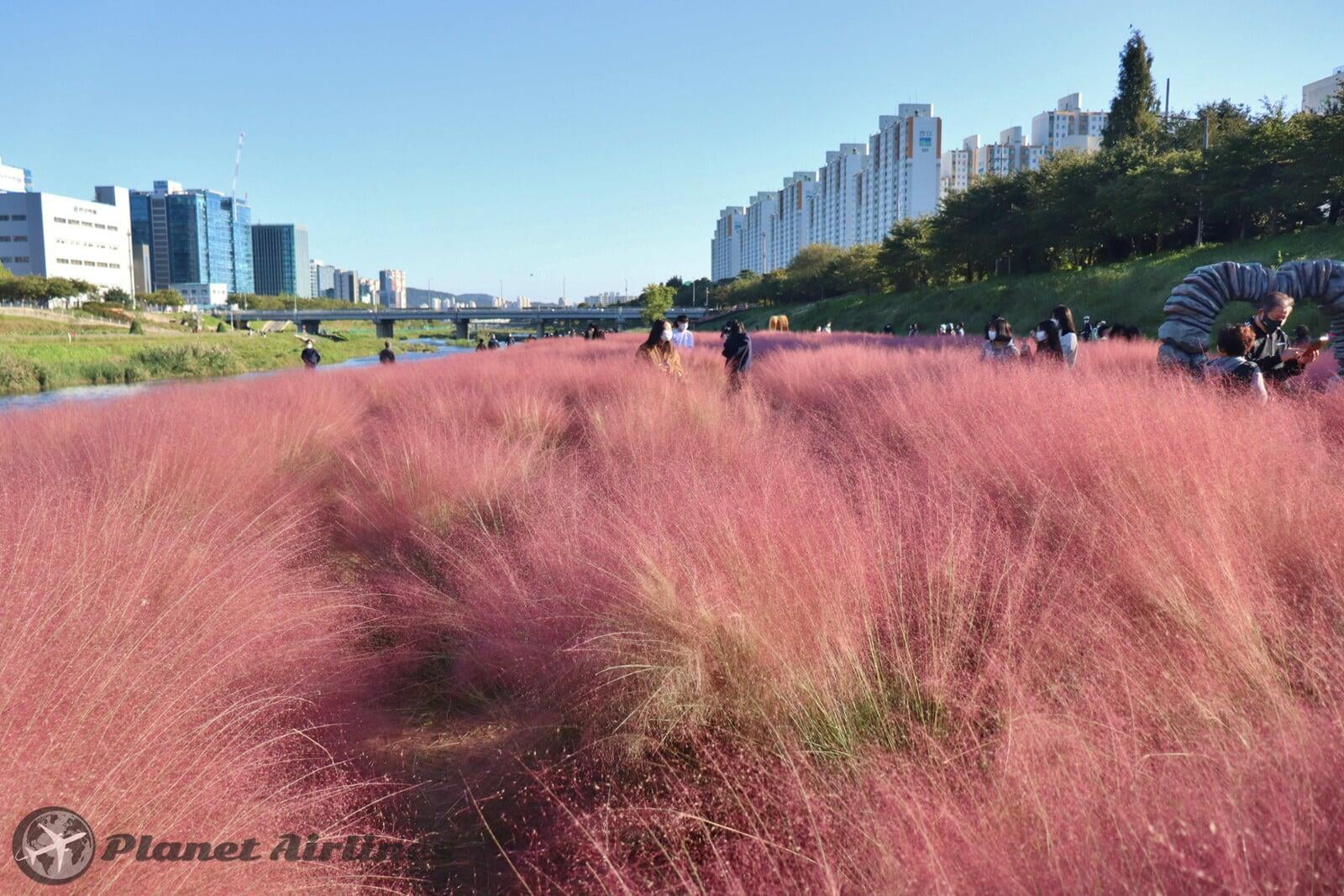
- National Museum of Korea, the flagship museum of Korean history and art in South Korea. The museum, one of the largest in Asia, is in the city's Yongsan District (close to Itaewon). It focuses on archaeology, history, and art and includes a vast collection of works and objects going back more than a million years. There are ancient and prehistoric artefacts, sculpture, paintings, and other artwork along with a large collection of objects and antiques.
Before or after your museum visit, you can go to the Yongsan Family Park, a nice outdoor space to relax. The War Memorial of Korea is also close by.
To get there, you can take the subway to Ichon (Line 4, exit 2) or bus 400 and 502.






- The 63 Building, is a skyscraper on Yeouido island, overlooking the Han River in Seoul, it's distinctive golden colour is what makes it unique. Standing 249 meters high and comprising of 60 floors and three basement levels, 63 Square is one of Korea’s tallest and most recognized buildings. The glass elevators which serve the viewing observatory ascend at a speed of 460 meters per minute, taking just 25 seconds to reach the top, giving passengers the sensation of a rocket-powered take-off as they enjoy breath-taking views. But the tower isn't just an observatory for panoramic views of the city, it is a multi-venue leisure complex featuring an aquarium, art gallery, IMAX cinema, performance hall and a wax museum, making it a popular spot for dates and family outings. Prices for the observatory cost 15.000 ₩.
To get there, take the subway to Yeouinaru (line 5 exit 3), walk down the park and you will see the building. Also by bus 261 from the centre.



- Nodeul Island: Located under the the Hangangdaegyo Bridge connecting Yongsan and Noryangjin, Nodeul Island is a cultural space with a great focus on nature, books, and music. Officially opened on Sept. 28th, 2019, Nodeul Island features a variety of facilities such as Live House, Nodeul Book Store, nTable, Plant Island, and more.
To get there, take bus 150, 151, 152, 500, 501, 504, 506, 507, 605, 742, 750A/B , 752 or 6211.



- Myeong-dong and The National Theater of Korea: Myeong-dong is one of the primary shopping districts in Seoul. The two main streets meet in the centre of the block with one beginning from Myeong-dong Subway Station (Seoul Subway Line No. 4) and the other from Lotte Department Store at Euljiro. Many brand name shops and department stores line the streets and alleys. Several major department stores have branches here, including Lotte Department Store, Shinsegae Department Store, Myeong-dong Migliore, Noon Square and M Plaza.
The are also has family restaurants, fast food, plus Korean, Western and Japanese dining options. Many restaurants in specialize in dongaseu (pork cutlet) and kalguksu (noodle soup). Other businesses in the area include hair salons, banks and theatres as well as the Myeong-dong Cathedral.
With in the area, you will see the Myeongdong Theatre, an exclusive theatrical performance centre, located in what was originally the National Theater of Korea. From 1934 to 1973, the National Theater of Korea pioneered Korean arts and culture, serving as a movie theater, performance hall and art theater. Though it closed its doors in 1975, it was reopened on June 5, 2009 after 3 years of renovation under the name of Myeongdong Theater.



- Itaewon: Itaewon was the first special tourist zone in Seoul, designated in 1997. It is a multicultural place, diverse and open minded. The name Itaewon started to spread worldwide in the 1980s, when Korea hosted the 1986 Seoul Asian Games and the 1988 Seoul Olympic Games, as well as many international conferences. This is a go-to place for both shopping and entertainment. The street is crowded with shops selling clothes and bags, as well as hotels, restaurants, entertainment facilities and travel agencies. Also famous in the district is Antique Furniture Street where more than 100 shops selling furniture and antiques stretch from Hamilton Hotel toward Bogwang-ro.
This district has developed into a multicultural mecca of great foreign influence. This international place is also one of the most popular tourist areas in Seoul. Shops and restaurants with influence from Europe, India, Pakistan, Egypt, Turkey, Malaysia, Thailand, and Mexico are widely available in Itaewon making the streets colourful and vibrant in terms of language and looks. In Itaewon you will find high quality leather products along with traditional Korean souvenirs. If you want to get custom-made shirts or dresses, Itaewon is also the place to go in Seoul. Furthermore, the main street is lined with brand stores such as Nike, Adidas, Converse, Apple Computers etc.
The local residents and visitors of Itaewon are dominated by Americans (both Military and civilian due to the military base history) but also many other 'international residents', who work and live here. Various performances and events are held in the area. In particular, Itaewon Global Village Festival, held every October. It is also the place where to go out for the LGBT🏳️🌈 community, specially in July, as the Gay Pride takes places in Seoul City and the after party starts in Itaewon. (see more in Nightlife tab).




- Lotte World Tower: was designed with a conceptual motif inspired by Korean ceramics and writing brushes. With 123 floors in total, the tower is the fifth tallest building in the world, standing at 555 meters. The tower contains galleries, cafés, and a luxury hotel, in addition to a skywalk and an observation deck. It is one of the best spots to appreciate the breath-taking view of Seoul's vibrant city lights.
Lotte World Mall, located next to the tower, features a complex of luxury department stores. The multi-levelled mall draws in many visitors as one of the top shopping attractions in Seoul, with a variety of domestic and foreign brands.
The mall also offers a wide-range of entertainment facilities, such as a movie theatre, aquarium, concert hall, and more. There is also Lotte World, which is theme park for kids (and not so kids) with some good views across the adjacent lake. For tickets and more info please refer to lwt.co.kr
Get there directly by subway, Jamsil Station, line 2 or 8, exit 1 and 2.
✔️Tip: If you are just planning to see the building from the outside the best time to visit, is in the afternoon and evening when the sun is behind the lake and reflecting on the tower. You can also visit the lakes nearby and stroll with a more relaxed crowd than the busy malls. Get there by bus 333, taking it from Jamsilsaenae line 2, exit 4.



- Seoul Olympic park: is an impressive leisure facility in which history remains from the 1988 Olympics which took place in the city. Now, visitors, can enjoy the open spaces with modern, state-of-the-art sports stadiums, an eco-friendly forest, and spacious grass fields. The park not only houses the country’s largest sports arena, but has also become a place where Seoul residents come to relax and unwind. Spread across approximately 1.45 million square meters, Olympic Park encompasses the land that was once a Fortress and a manmade lake from the early Baekje period. The park is divided into several zones, including a leisure sports park, a cultural art park, an eco-park, and the History Experience Park dedicated to the area’s rich historic heritage. Because Olympic Park is so large, you can't see it all in one visit, so its better to plan ahead or to further save time, visitors can ride the Road Train (“Hodori Train”) located next to Peace Square.
To get there you can take the subway to Mongchontoseong (line 8, exit 1) or Olympic Park station (line 9 and 3, exit 3).


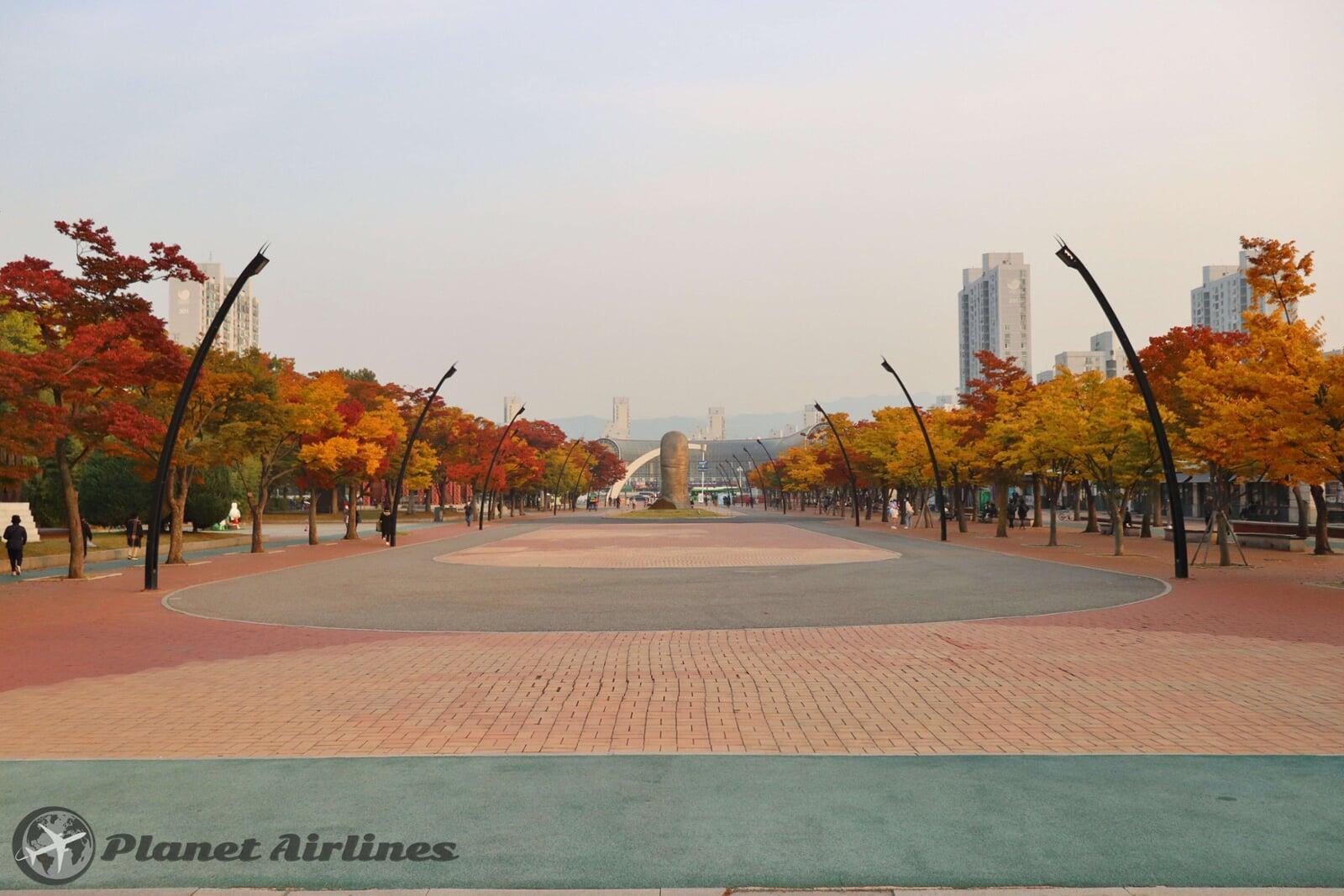
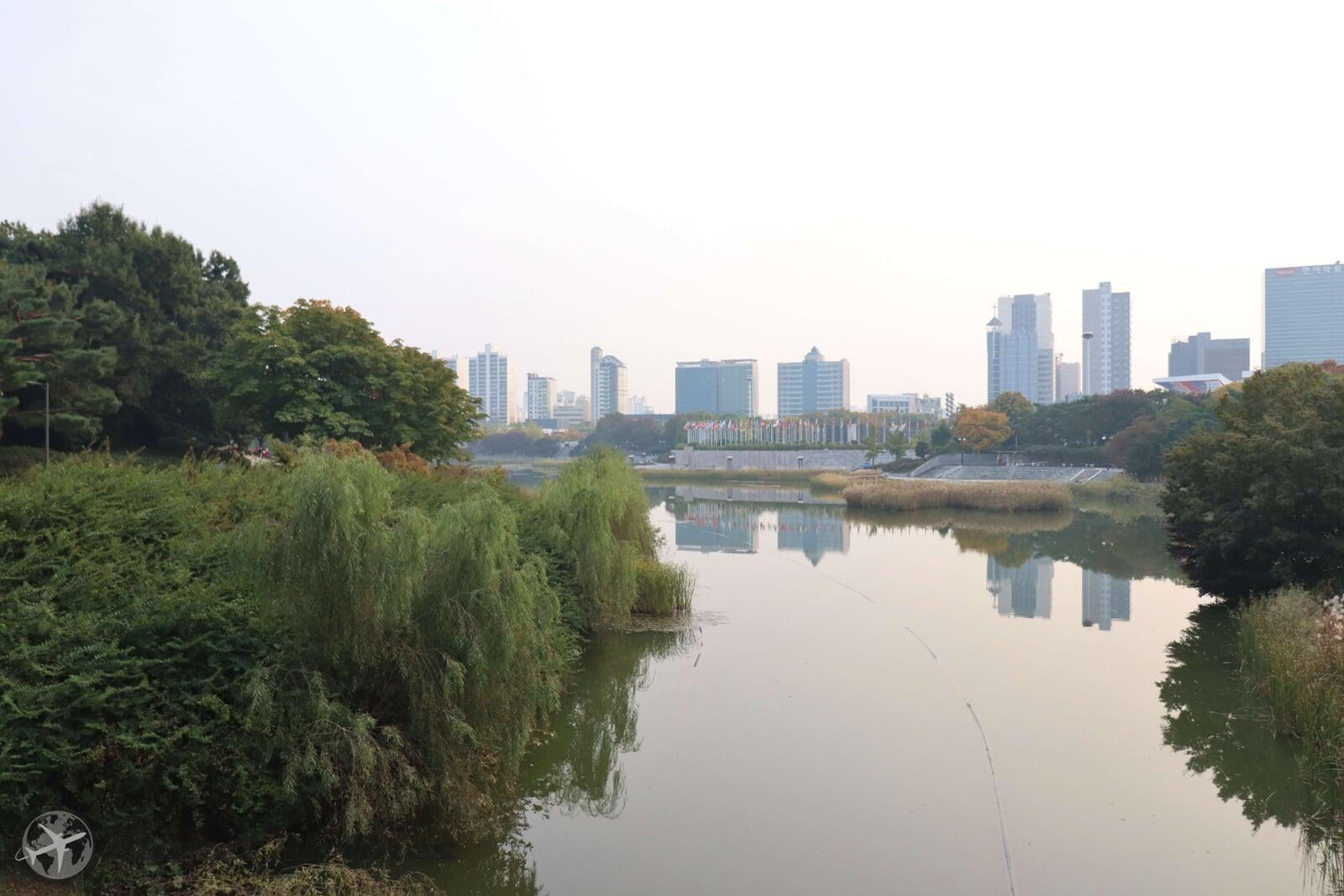
- Bukchon Hanok Village: For a taste of Korean traditional culture and architecture, a visit to this village is a fun and educational way to spend an afternoon. This preserved district of several ancient For a taste of Korean traditional culture and architecture, a visit to this village is a fun and educational way to spend an afternoon. This preserved district of several ancient neighbourhoods gives you a feel for what it was like to live in Korea 600 years ago. It's right in central Seoul, in the area between the Gyeongbokgung Palace and the Changdeokgung Palace.
The neighbourhood of narrow streets feature hanoks or traditional Korean houses. It's a unique place, as it's a historic area, very popular with tourists, but it's also a real neighbourhood because the houses are all occupied. Some of the hanoks are now guesthouses and bed-and-breakfasts, and a few are museums and can be found. Others are cultural centres showcasing traditional crafts and other historic aspects of Korean life, but most are private homes, so silence and respect is requested when walking around the neighbourhood.
To get there, take the subway to Anguk Station, line 3 exit 6 and then take bus 02 (ride 5 stops) which will leave you at the main street at the lower end of the Village.






- Local Koran Markets: There are many markets which can be found in the city, but we cna highlight two, which provide a real feel of true Korean culture and history:
Gwangjang Market: First established in 1905, Gwangjang Market is known to be the oldest continually functioning market in all of South Korea. And it’s one of those places that has not only withstood the tehe market still remains authentic and retains its Korean cultural heritage, style, and charm. This is a place in Seoul where you’ll find both tourists and Koreans, all enjoying the same delicious food.
Get there by subway Line 1, to Jongno 5, take exit 8 and the market is 3 min walk.



Gyeongdong Market and Herb Museum / Medi-center: This market consists of Gyeongdong Herbal Medicine Market, Gyeongdong New Market, Gyeongdong Old Market all together, but the truth is that it's hard to tell where one ends, and the other starts. The most famous part of Gyeongdong market is the herbal medicine market which is the largest herbal medicine market in South Korea. You can find more than 1,000 shops and oriental herbal clinics in this area.
You can visit here the Herb Medicine Museum, which opened in September 2006 on the grounds of Bojewon, a medical institution for the poor that was in operation during the Joseon dynasty. The museum was established with the goal of preserving and developing Korea’s herb medicine culture. In October 2017, the museum moved to the second floor of the Seoul K-Medi Center. The center provides both information and hands-on programs. Gyeongdong Market also serves as a wholesale and retail markets selling agricultural products and fish.Get there by subway Line 1, to Jegi-Dong, take exit 2 and the market is 2 min walk where you see the large sign for the medicine market gate.






- Seoullo, elevated pedestrian walkway: A newly renovated old viaduct for vehicles that turned into a pedestrian walkway, opened in July 2017. The former vehicle viaduct was deemed unsafe and too expensive to repair for vehicle use, so it was converted to a pedestrian walkway. It begins at Seoul station opposite the Lotte Mart and ends at Namdemun Market gate 6. It is illuminated in blue led lights. It's very convenient to walk with escalators and elevators at various points. Cafes, tourist info centre and patrolling security staff are on hand to to provide you with assistance. A must place to visit and enjoy. Also don't forget to see the old Seoul Station (now a museum).
Get there by subway Seoul Station, exit 7 or 8 and take the escalator up the bridge and then walk the bridge.



- Hyehwa and Daehangno streets: Hyehwa is a popular neighborhood in Seoul for walking, with many indie theaters, cafes and restaurants. It’s historical: the birthplace of prominent Korean musicians and thespians, the site of key democracy protests in the 1980s. Hyehwa is also beautiful: Buildings are stacked with characteristic mahogany bricks (some are originals by architect Kim Swoo-geun, others are imitations). The best time to visit the are is during the evening or after having walked to the trail views nearby at Naksan Park.
Daehangno (대학로) refers to the street ranging from Jongno-gu to Hyehwa-dong. Directly translated "University Street" in English. The surrounding area is one of the most vibrant areas around the city, attracting a host of young Koreans and indie artists who are looking for a little more than just fun. Daehangno is most well-known for its art and culture and packed with a number of small indie theatres for lots of different plays, dramas and musicals. Daehangno is a very popular date spot for young Korean couples since the area offers literally everything ; art, culture, plays, good vibes. In addition, you can walk to Naksan Fortress Wall Park located just near, where you can capture the best view of the city. Follow the trail through Ihwa Mural Village, you will find numerous artworks as you go.
To get to Hyehwa, you can go directly by subway, line 4 to Hyehwa, exit 1 or 4.
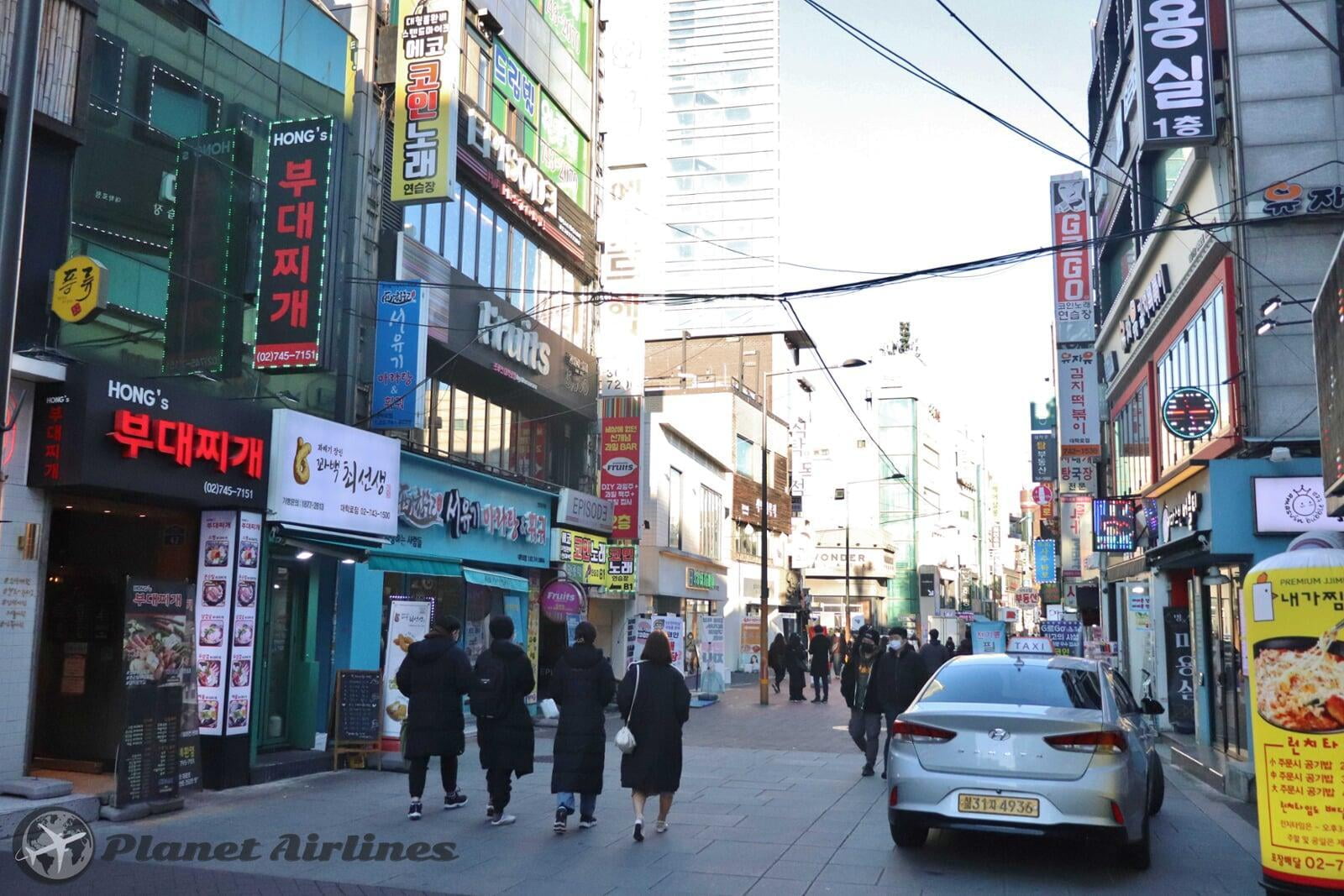


- Seodaemun prison Hall: is a museum and former prison in Seodaemun-gu, district. It was constructed beginning in 1907. The prison was opened on October 21, 1908, under the name Gyeongseong Gamok. During the early part of the Japanese colonial period it was known as Keijo Prison. The hall is packed with sculptures of heroes who led Korea's independence movement. Within the prison are lots of records of the torture Koreans suffered during Japanese colonization, with the historical facts spurring an emotional charge. Inside the prison are rooms with mannequins that display the torture the Japanese used at the time and photos of martyrs who sacrificed themselves for the country's freedom. Visitors can also see videos that portray the situation of that time. Outside the prison are rooms covered in glass and mirrors that depict the stories of independence fighters. Despite the sad past, it does give history knowledge and showcases the strength of the Korean people to recover their country.
To reach there you can take the metro to Dongnimmun Station (line 3) Exit 5.




- Bongeunsa Temple: is one of many Buddhist temples in and around Seoul. It first opened in the year 794 and is a complex of multiple buildings and shrines. It's easy to visit, as it's centrally located in the exciting Gangnam area. The temple is on the side of a low mountain, directly across the street from the massive COEX convention centre and mall.(popular for one of the biggest book shops). It's a popular spot for convention-goers to take a break and enjoy the peaceful atmosphere. Visitors are welcome, free of charge. The temple even has a program that allows guests to experience the daily life of a monk for a few hours.
To get there, take the subway to Bongeunsa station, line 9, exit 1.








- Cheonggyecheon, Seoul's Urban Stream: This natural creek that flows through central Seoul was covered over by highways in the post-Korean War economic boom. Seven miles of the creek were uncovered as part of an urban revitalization project and turned into an outdoor recreation area, opening in 2005. There are now seven miles of creek-side hiking, walking and biking trails. The stream is also home to the spectacular Seoul Lantern Festival, held at the end of November. Ornate, lighted paper lanterns are displayed in and along the creek. It's free to access. Other times of the year its also nice and pleasant to walk here.
To get to the beginning of it, go to Gwanghwamun , Line 5 exit 5.


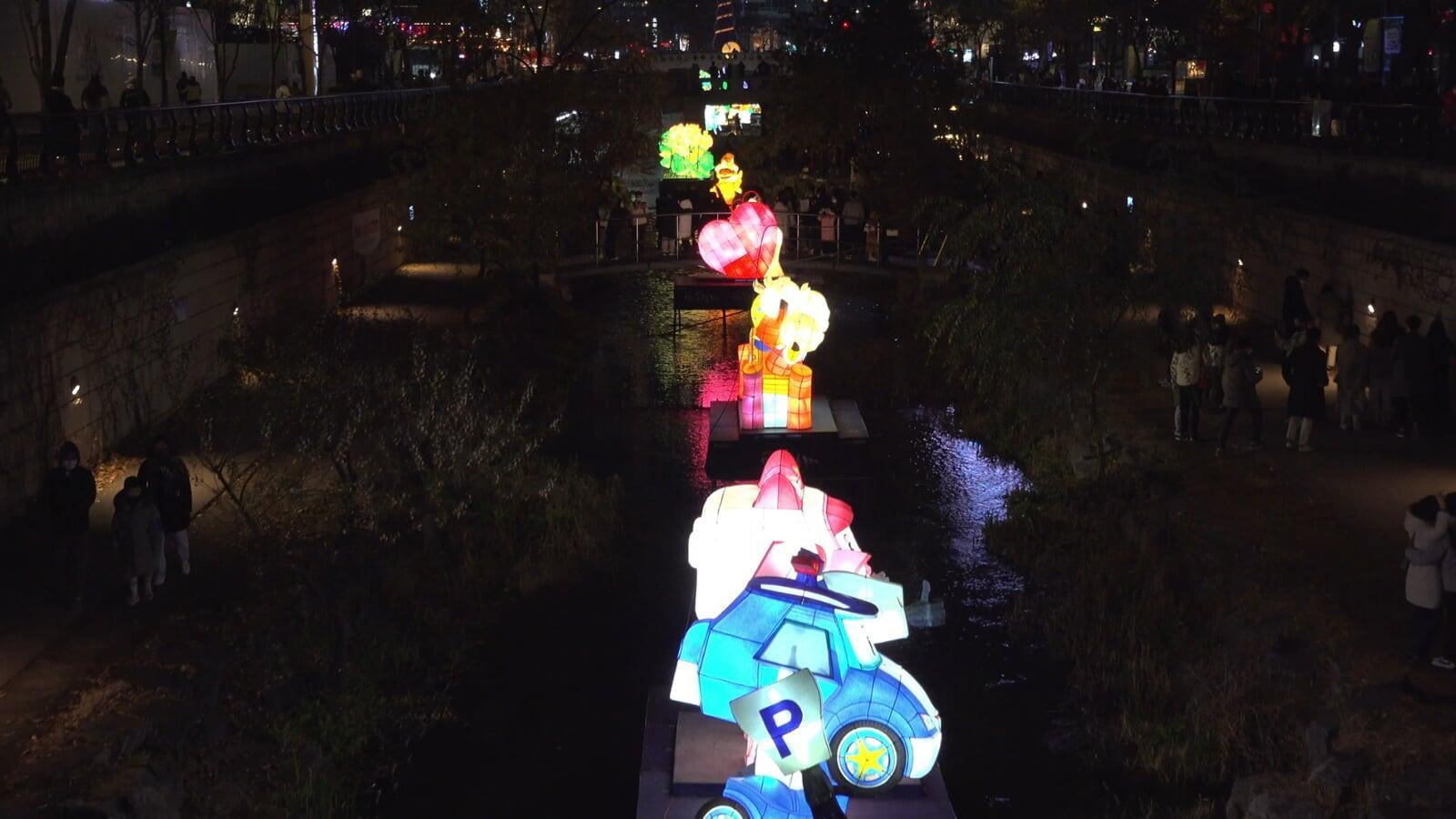
- Seoul Botanical Gardens: Located in Magok, Seoul Botanic Park is the first facility in Seoul to combine botanical garden and park in one space. A space where a forest, garden, lake, and marsh coexist together, Seoul Botanic Park's theme zone houses plants representing 12 major cities around the world. Within close distance from Gimpo Airport, Seoul Botanic Park is also directly connected with the subway station, allowing visitors to easily access its facilities. The Park was created to advance the urban ecology of Seoul and will display plants from 12 cities around the world.
To get there, take the subway to Yangcheon Hyanggyo , line 9 exit 8 or also at Magongnaru Station (which is quicker from Seoul with the AREX line), line 9 or AREX Airport Express line, exit 3.

- The Blue House: is Korea's version of the White House. It's the official residence of the Korean president, as well as the location of his and related executive offices of state. The Blue House is located behind the Gyeongbokgung Palace. It isn't really a single building, it's an entire campus of buildings, all built in the traditional Korean style and all featuring the distinctive blue tile roofs where it gets its name. Hour-long tours are given, but participants must apply and schedule their tour in advance, online. The tour takes you to many parts of the palace complex including meeting rooms, reception rooms, and the Korean version of the Rose Garden, where the Korean president holds press conferences. Book it here!
To get there, you can walk from Gyeongbokgung Palace (exit the palace from the back if you have purchased a ticket).Otherwise you will need to walk around the palace. The nearest station is Gyeongbokgung, Lilne 3 exit 4.
When staying longer in Seoul, perhaps you will want to explore more the outskirts of the city and enjoy some day trips out of the big metropolis and discover nature, modern architecture, culture, do hiking and sports or just enjoy the travel to other destinations which are 1 to 2 hours away from Seoul by public transport.
Below you will find of these interesting destinations which are also highlights, should you stay in the city that extra time!
- Suwon: this historical and cultural city, was one of four main regional government centres during the Joseon dynasty. Hwaseong Fortress, built to protect the city, was designated as a UNESCO World Cultural Heritage Site on December 12, 1997 for its historical value. The fortress offers various performances daily as well as the Suwon Hwaseong Cultural Festival every fall. The walls stretch for 5.7 kilometres, with Paldalsan Mountain at the centre. The fortress, constructed from 1794 to 1796, was built as a display of King Jeongjo’s filial piety towards his father and to build a new pioneer city with its own economic power. It is free to walk around it and access some of its walls to observe the views.
Some of the places not to miss in Suwon are the Hwaseomun Gate, Janganmun Gate, Banghwasuryujeong Pavilion , Hwahongmun Gate, Hwaseong Haenggung Palace and the Hyowon’s Bell.
Furthermore, Suwon has an interesting transport museum that has exhibits related to cars and motorcycles of various brands, produced in the 20th and 21st centuries. In the vicinity of the city, tourists can visit the folklore village that serves the function of an open-air museum of crafts, as well as a modern amusement park called Everland.
To get to Suwon, you can take Korail from Seoul Station, which about 4000 ₩. Alternatively, there is also metro, line 1 but it does take about 90 min reach to Suwon. There is also an express bus from Seoul city Station, catch the red bus 8800 and will take you to the Suwon Bus Station where you can transfer to local bus 82-1 which goes to the train station and the castle.












Nami Island: is one of the most popular and beautiful destinations to visit out of Seoul if you have time. A day trip to Nami Island can be made together with its nearby attractions including The Garden of Morning Calm, Petite France and Gapyong Rail Park. There are many options to get to these attractions in Gapyeong easily including the once-a-day direct shuttle bus services to/from Nami Island and the many affordable bus tours available to different Gapyeong's attractions of your choice.
For those who are more adventurous and would like to travel at your own timings, public transport options are pretty convenient too, but journey times can take up to 2 hours each way.
About Nami island: the Island has the interesting shape of a leaf with 5km circumference. It is surrounded by Cheongpyeong Lake. The island was formed with the construction of Cheongpyeong dam and named after General Nami, a notable figure in Korean history. Nami Island is well-known worldwide as the filming location of the hugely popular Korean TV drama, Winter Sonata (2002). There is even a life-size statue of the show's main characters, located on the extreme right end of the island from Nami Wharf. Even though it is a small island, there are a lot of things to see, do and eat. So, visitors are encouraged to plan enough time, leaving Seoul in the morning at returning in the afternoon or evening. You can learn more about the activities and fees at www.namisum.com/
The entry fee to the island is only possible by Zipp Wire or by Ferry which leaves every 20-30 min. The cost by ferry is 13.000 ₩.
Getting there by public transport: You can take the local train from Hoegi (line1) to Gapyeong if travelling on the metro card (T-Money). There is also a faster train from Cheongnyangni Station (line 1) to Gapyeong by the ITX train, but the fares are around $6 which need to be purchased in advance.(or at the ticket office). Korail.com
You can also travel by bus, take the red bus number 1330 Cheongnyangni Station (line 1, exit 4) and get off at the last stop.
Either you get by train or bus, you need to then take bus 10-4 to Nami Ferry. When you see the Starbucks, get off and walk to the entrance of the ferry.


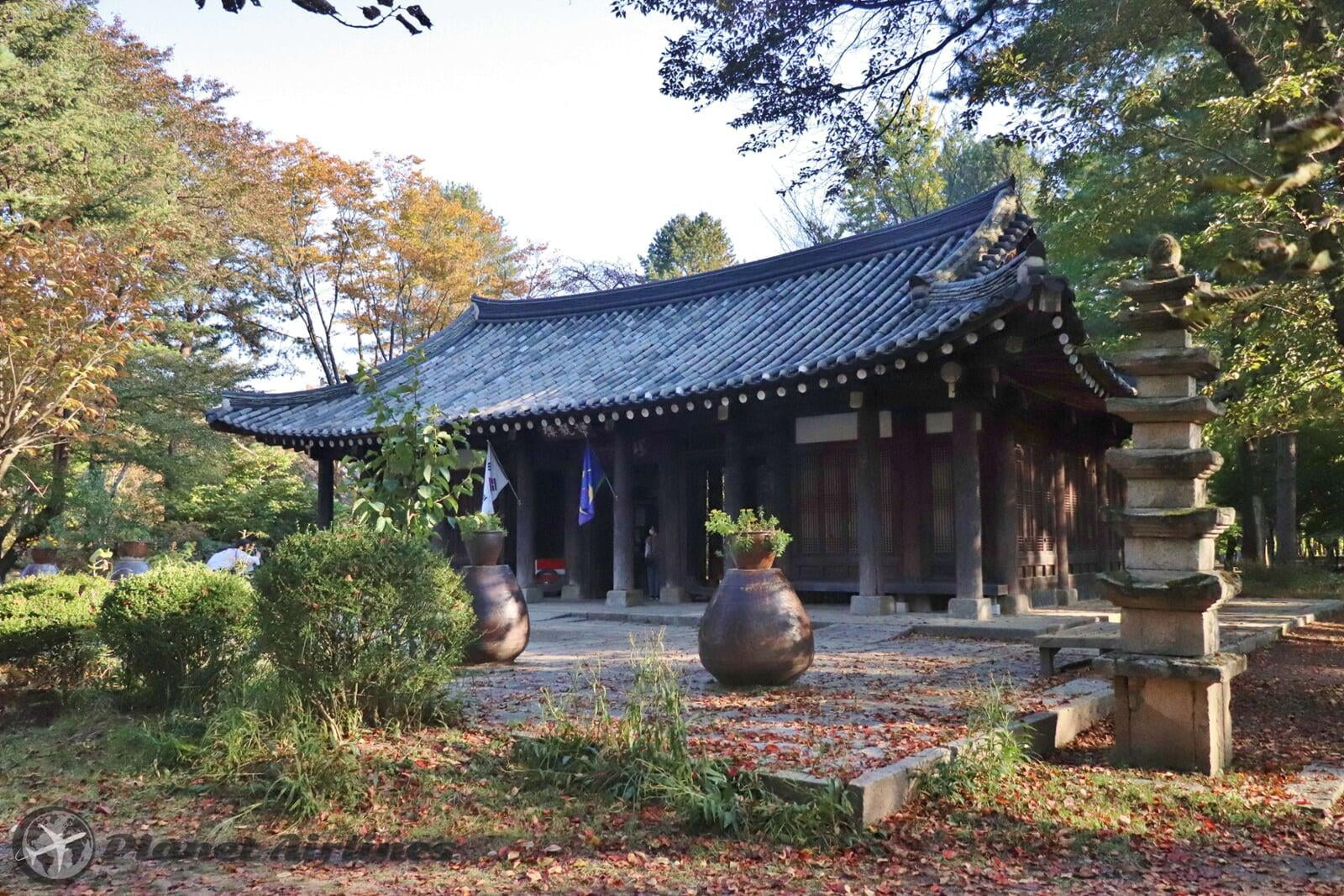
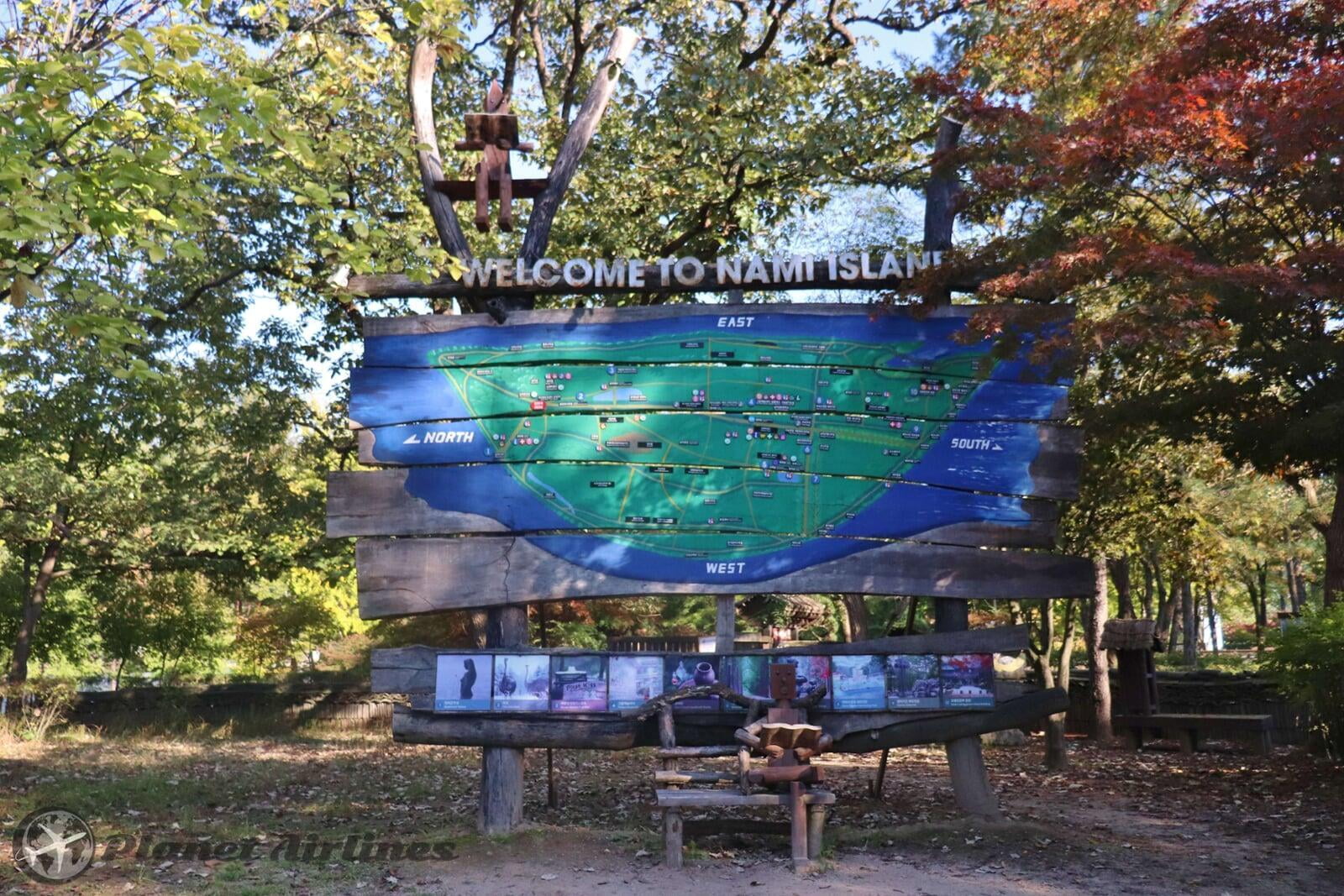



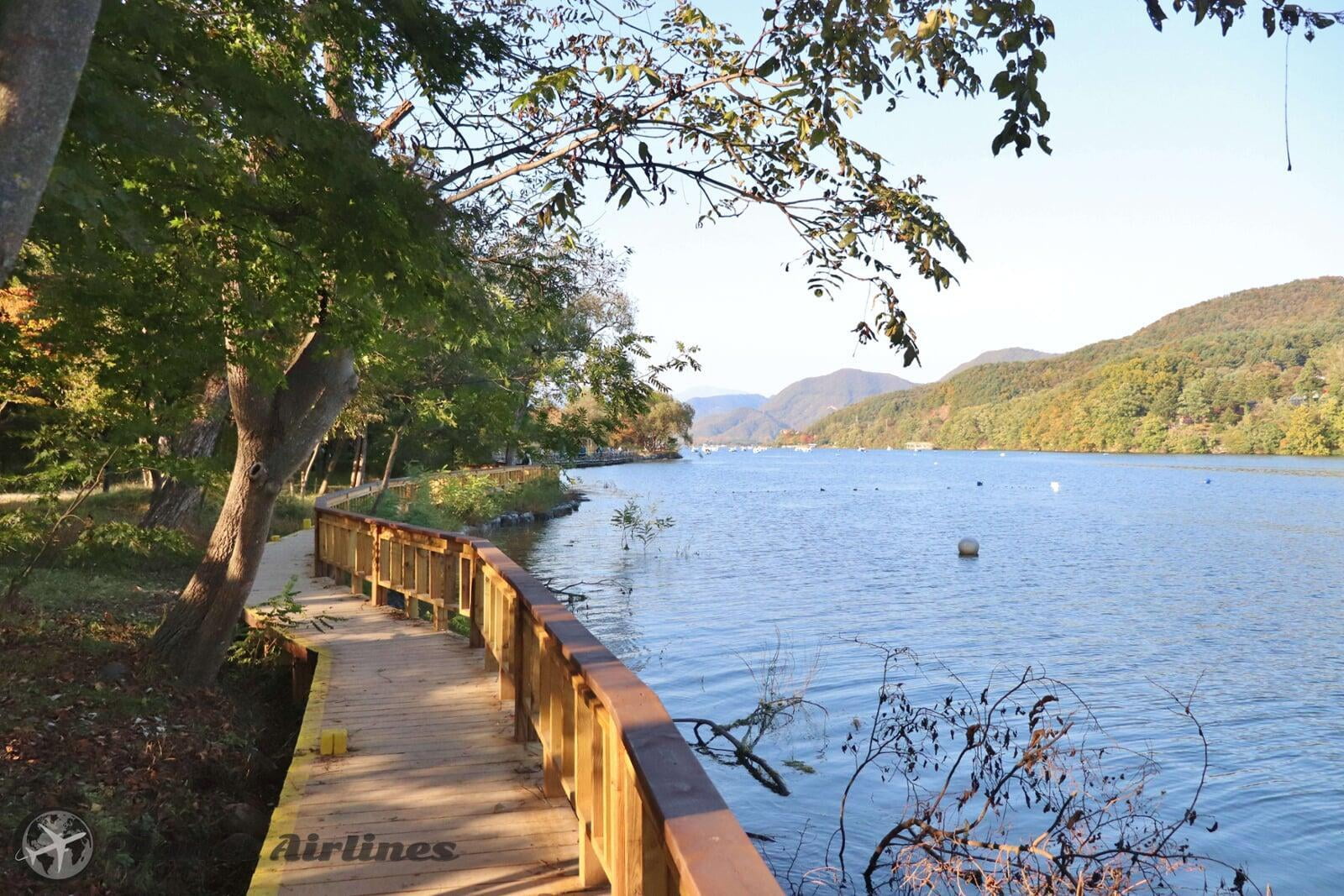
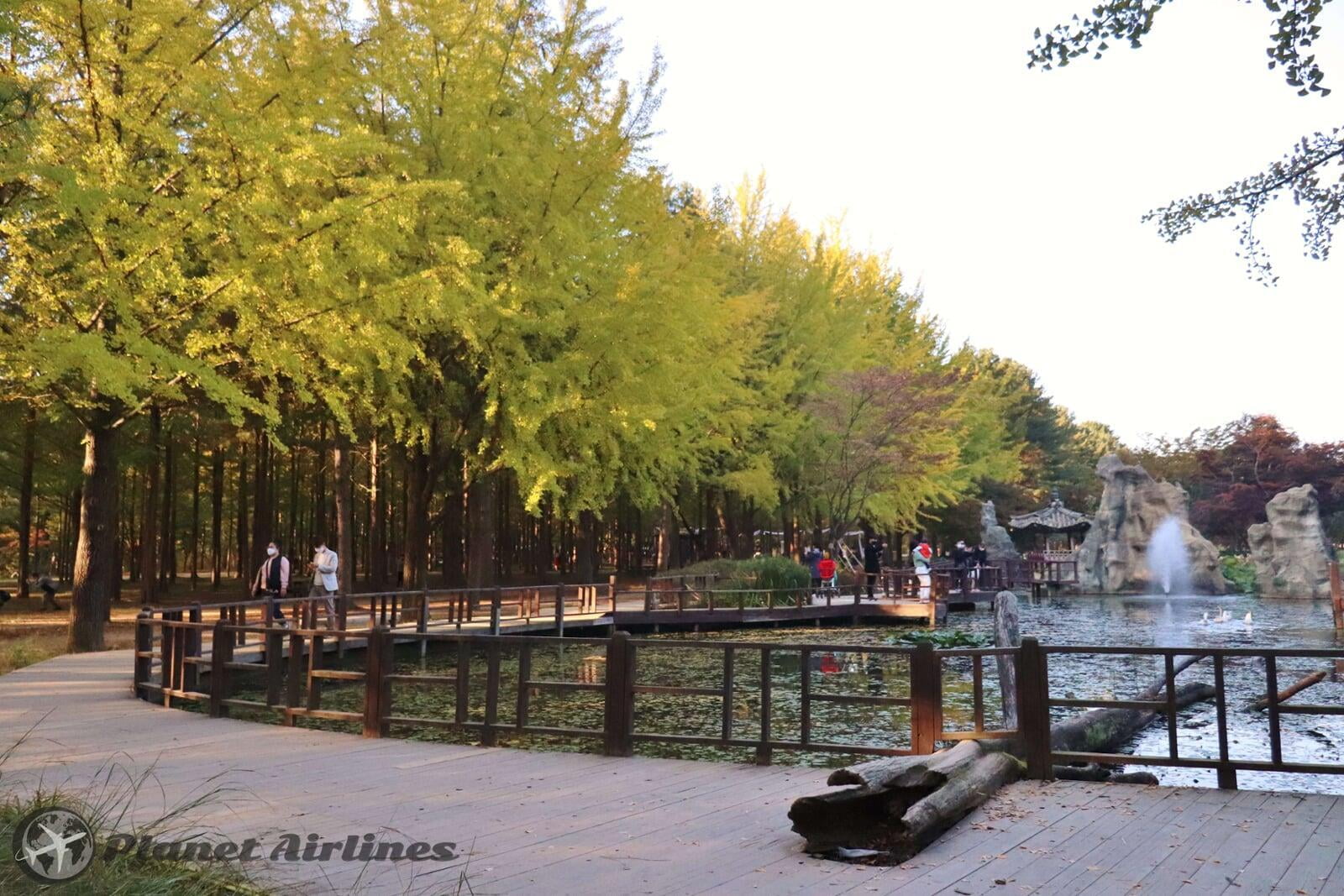
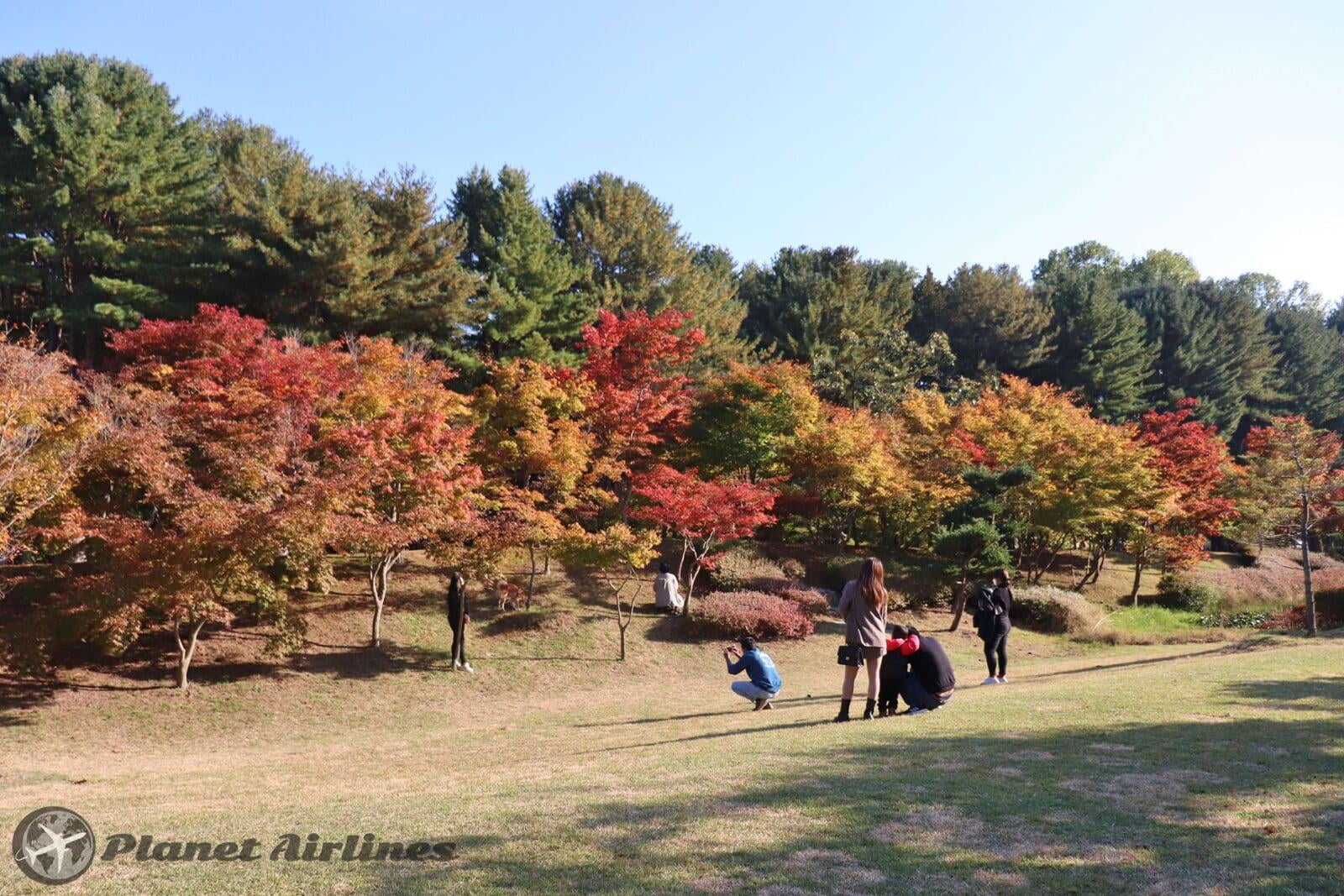
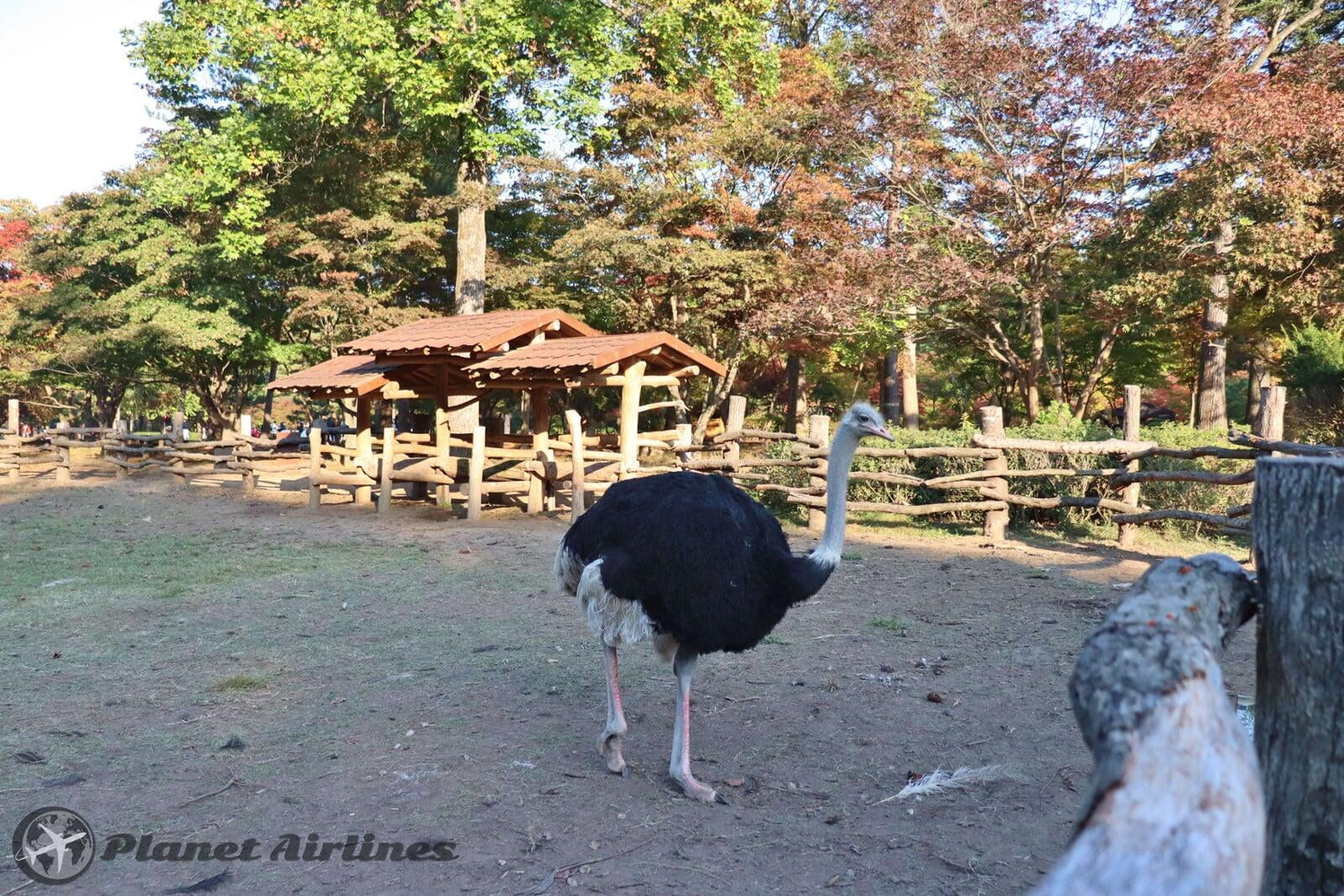

- Incheon: As a port city bordering the country's capital, Incheon is located off the coast of the Yellow Sea in the north of South Korea. It is also the name of the International Airport where most travellers will land from, and connects Incheon airport, with Gimpo International Airport and Seoul city city by the AREX (Airport Express Train).
Incheon can be regarded as a rapidly developing metropolis. Incheon used to be serving functions of a small fishing village. Nevertheless, it has managed to become the third largest and most significant city in Korea (after Seoul and Busan). Today, skyscrapers and other modern architectural buildings are considered integral parts of the city. Moreover, Incheon has become one of the largest economic centres where cultural life is concentrated. As a result, the tourism industry is booming there right now. At the same time, folk traditions are extremely popular in Incheon, preserving the monuments of the past. The city attracts tourists with its beaches, spa complexes, boat trips, and shopping. In the city, business life and entertainment harmoniously intertwine with natural relaxation and serenity.
To get there, one of the most popular areas is the Songdo Central Park, with its impressive modern architecture, modern infrastructure, super-clean streets and open park for everyone to enjoy. Here, you can dine in the many restaurants around the park, go shopping or rent a paddle boat. To get here, take the subway to Bupyyeong (line 1) station and change for the Incheon Line 1 metro to Central Park station (exit 3).
You can also take the express red bus from Seoul city centre, bus M6405 or the M6450.
About the DMZ: The history of the now, two countries has created this line which is protected by the USA military in collaboration with the South Korean Army. After pain of the division, truce talk has been held between South Korea and North Korea on 1951, at the meeting both decided to rest from the war and finally reached to the agreement of setting up the Military Demarcation Line between South and North. The Military Demarcation Line is actually constructed 2km away from the North border and another 2km from the South border, giving a total of 4km between Korea, where the zone in between is really a no man's territory.
Due to the strong restriction of DMZ area, there has been no access of any civilian for 40years and it's only managed by a Military Community. Since there was no access of human for 40years, the place became an ecological preservation area. There are places in which the perimeter gets closer than others but the heavy security and the constant signs, reminds you that you need to always follow the instructions of the tour guide or the driver.
The tour: This is one of the most popular tours because it is the only chance for you to go very close to the border between two Koreas. Taking this trip, is only allowed exclusively by operated licensed tour companies. There is no way you are able to make some visits if you attempt to drive up and get close to the DMZ lines. However its possible to drive to some look out spots, take the DMZ cable car and visit the infiltrations tunnels.
But if you are taking the tour, this has a great advantage! Local guides will tell you many stories, history and facts about North Korea, so the learning on the trip is very interesting and ensures the trip to become engaging and very informative. With DMZ Tours, you will able to visit the Dora – Observatory ,where you can view parts of North Korea via some good binoculars and compare the two lands. You will also experience the walking into 3rd Infiltration Tunnel(1.0mile long) to see how North Korea tried to sneaky into South Korea after the peace settlement. Also you can stop by Imjingak to find out the story of pain of division with the experienced guides.












North Korea Insight: From Dora – Observatory you will be able to take a birds insight into North Korea, perhaps a very unique opportunity to see first time this remote country so far away from modern life and technology. The binoculars can be focussed on a remote town which is bordering the river as well, but the differences in infrastructure, people and constructions are dismal!
The first thing you will notice, the lack of roads or highways and the ones that are around the village are all gravel or sand. There are very few houses which seem to be finished. A lot of them are missing windows, doors, or some walls have come down. There is very little decoration, even colours are missing from the North Korean side.
If you're lucky to see people around, they are most likely walking, riding a bike or walking a dog. There is no traffic, children are absent and women don't come out of the houses often. There are some guard posts every few 100 meters and these appear empty but there are military operating in the area apparently.
Watching the below video will give you also a better insight of what to see. (Taking the video from the binoculars is quite hard, so we do apologise for the quality and movements).
About the JSA (Panmunjom Joint Security Area): On April 27, 2018, an inter-Korean summit meeting was held at ‘the Peace House’ of Panmunjom. It was a meeting which took place 11 years after the inter-Korean summit in 2007. All the earlier inter-Korean summits used to hold in Pyongyang, but the 2018 summit was held for the first time in the southern part of Panmunjom's House of Peace.
The JSA is located 48km northwest of Seoul, South Korea and 10km east of Gaesong, North Korea. After concluding a Truce Agreement in 1953, it was decided to be a Joint Security Area between UN and North Korea. It is a small space where the distance between the front, rear and right and left guards is only 800 meters.
In 1950, there were only a few straw houses in the village before 25th of June. The truce talks between 1951 and 1953 were held, and it was known all over the world. The truce talks, which began with a tent for the first time, were held for a year and nine months. After the truce talks were over, a wooden building was built in the vicinity to sign the truce agreement. Then, it moved in present place. After The Truce Agreement was signed here in July 1953, it became a "Joint Security Area" between the United Nations and North Korea. From August to September of the same year, prisoners were exchanged for one month.
Panmunjeom was mainly used as a place to manage the truce. Within the Joint Security Area, there are the main conference hall of the Military Armistice Commission and the conference room of the Neutral Nations Commission of Supervision. The Military Demarcation Line indicates Mike line that is passing through the middle of a conference table set up in the conference room of The Military Armistice Commission. The U.N. and North Korean flags on the table are also symbols of Military Demarcation Line.
In addition, there is a bridge called ‘Unreturned Bridge’ that symbolizes the division of people in the west of Panmunjom. This is the name of prisoners of war exchanged through the bridge since the 1953 Truce Agreement. However, the bridge was closed due to "The Axe Murder Incident". In August 1976, two U.S. military officers were killed with axe by North Korea soldiers in the Panmunjeom Joint Security Area. In this incident, a Military Demarcation Line was set up within the JSA.
Now The Joint Security Area is safer and more peaceful, but tensions are always high. The tour guides of ‘DMZ TOURS’ will explain in easy and detailed the history and process from June 5, 1950 when the Korean War started to April 2018 when the inter-Korean summit was held. Tours to this area are limited by the number of people and tours who can operate. To be within a chance, book early and always follow the guidelines from the tour guides, because this area is of highly sensitive diplomatic matter.
For more information on the tours and the price list please visit: dmztours.com
❗Attention: The DMZ Tour is also one that has its risks, in relation to its proximity to a very sensitive territory which is always in alert. There are live military personal active in the area and the threat of a spark in tensions is high, so this is why this tour can foresee at times, unexpected cancellations, changes in routes or activities depending on the political and the military actions taking place on a daily basis. One of the things you should never forget to bring to this tour is your Passport!
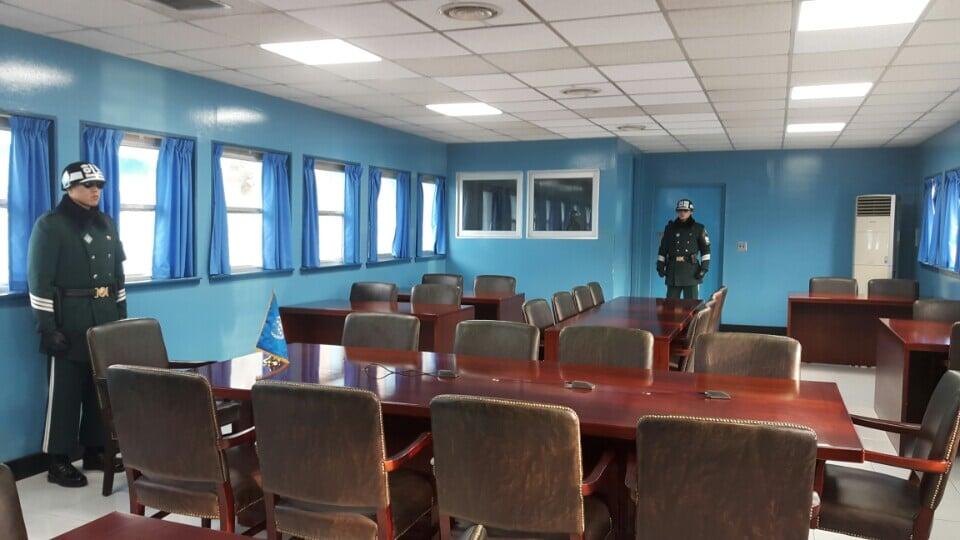
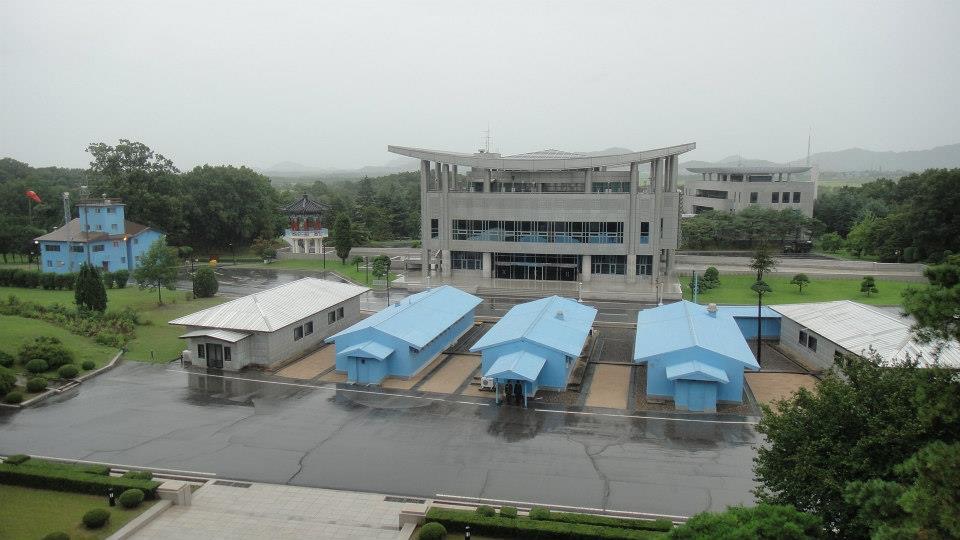
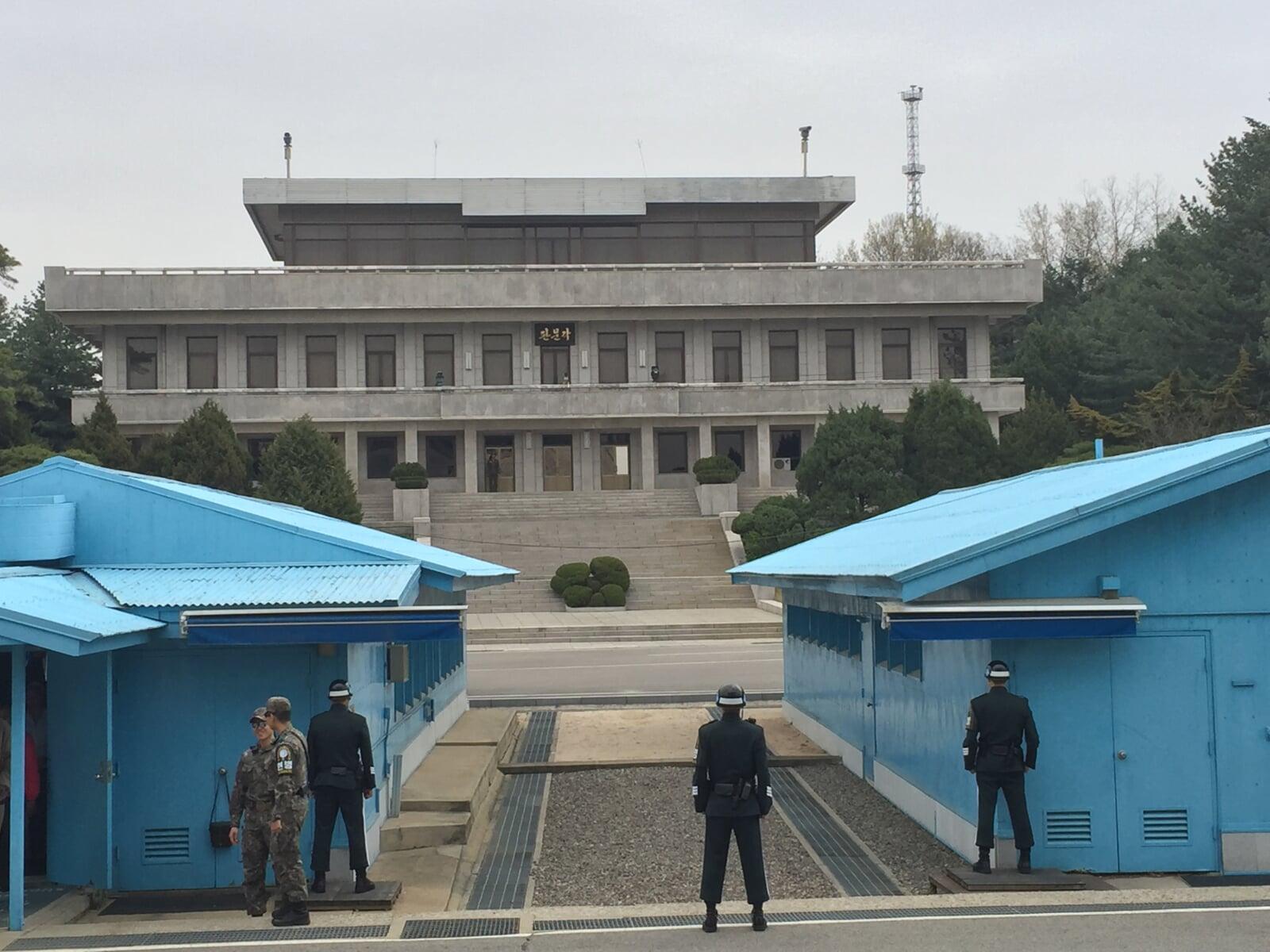
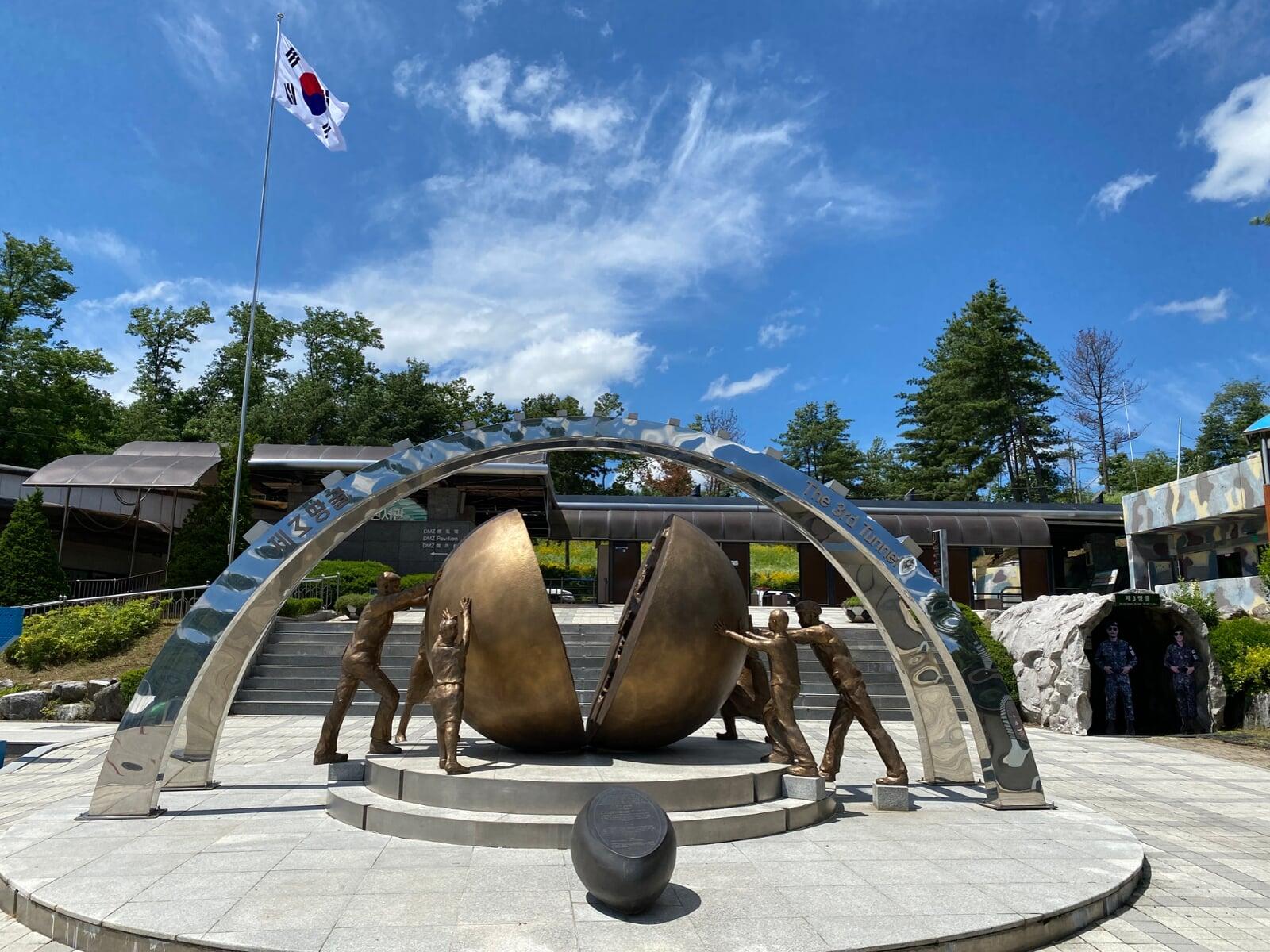
The cosmopolitan city of Seoul is known for having quite a good nightlife, packed with just about every activity and all kinds of entertainment venues, and with a particular fascination for karaoke bars.
During the night, Itaewon🌈 really comes alive. Seoul is a thriving city during the weekend and Koreans love to go out and party! Where to go out best but in this area, notorious for its nightlife, labelled a nightlife/entertainment district for ages. This district caters for everybody's taste. Itaewon has a significant gay/lesbian community, so you'll also find numerous gay bars in this colourful district, along with world class clubbing, numerous smaller clubs and lounges, Irish pubs, sports bars, boutique hotels, cigar lounges, cocktail bars, hostess bars etc. Itaewon offers great variety for everyone and the prices are not that bad either!
Other areas include, the night markets in Dongdaemun, which is great for a few quiet ales and a spot of theatre, or to stroll through a gallery. While Myeongdong is a great spot to start off the evening with a dinner or a few beers at one of the many cafés and bars. The area of exclusive wine bars, clubs and expensive bars in Apgujeong-dong or Sinsadong, attract a trendy crowd, but it's very expensive and an etiquette for entering clubs could be demanded.
The more relaxed, younger crowd tends to hang out in Gangnam, where plenty of Western-style clubs and bars can be found.
Hongdae is the best area for live music and great dance floors on which to move into the early hours. Mostly frequented by the younger crowds, university students and a mix of foreigners and visitors also now hang out here. Hongdae is also known for being a popular fashion street with modern and alternative brands. In the main street you will also find lots of dinning options, bubble tea cafes, chill cafes, gaming shops and karaoke's.
Another area is Hyehwa, which is full of cafes, restaurants, bars, clubs and shops. The buildings are almost European-looking, old fashioned and rustic. The streets are full of amazing bars, brunch places, cute little cafes and so many delicious-looking restaurants.



✔️Tip: Soju is South Korea's rice wine, traditionally served in small shot glasses and drank all at once with a shout of 'Gumbay!' (cheers). Although traditions often become blurred on the party scene, it is customary in South Korea for people to buy and pour each other's drinks rather than their own. If you don't want your drinks refilled, you should leave a bit of liquid in them.
Shopping in Seoul can be sometimes a chaotic experience, with a vast selection of products, busy malls, and communication barriers, making it more difficult for visitors to shop. However, there are many bargains that make it worthwhile. Most shops stay open until 10pm and some markets are open 24 hours.
Myong Dong is the most popular shopping district, home to sports and fashion shops offering cheap and trendy clothes for young people. Seoul's biggest department stores are also in the Myong Dong area: Shinsegae, Lotte, and Hyundai. These dazzling emporiums stock everything under the sun, from cheap electronics to high end fashion. All feature labyrinthine grocery selections and popular food courts. The two main streets meet in the centre of the block with one beginning from Myeong-dong Subway Station (Seoul Subway Line No. 4) and the other from Lotte Department Store at Euljiro. Myeong-dong also has family restaurants, fast food, plus Korean, Western and Japanese dining options. Many restaurants in Myeong-dong specialize in dongaseu (pork cutlet) and kalguksu (noodle soup). Other businesses in the area include hair salons, banks and theatres.
Insa-dong is a vibrant district with dozens of antique shops, traditional teahouses, and bookstores along its alleys. There are around 100 art galleries, attracting those interested in traditional Korean fine art. Popular spots include Hakgojae Gallery, which displays folk art, and Gana Art Gallery. Shop for authentic goods and souvenirs such as hanbok (folk clothing), hanji (traditional paper), artwork, vintage toys, pottery, and folk crafts. Every weekend, Insa-dong’s main street becomes a pedestrian-friendly space.
Second hand goods are numerous at markets like the Hwanghak-dong Flea Market. Chang-anp'yong Antique Market treasures include paintings, calligraphy, and old chests, as well as stone and ceramic artefacts.
The birthplace of leading global electronics companies like Samsung and LG, South Korea is renowned for its cutting edge technology. The best place for electronics is the Yongsan Electronics Market, where dozens of stores specialise in one or two of the latest gadgets and frequent sales mean excellent prices.
The Itaewon area has shops selling discounted designer clothes from brands such as DKNY, Nike and Adidas; stalls on the street sell hats and fake designer handbags.
Apkujong has upscale department stores and boutiques, as well as the Kangnam underground shopping mall.
For high-end shopping, heat to the Lotte Tower, the complex also offers galleries, hotels, cafes, shops and restaurants, game and entertainment facilities, electronic shops, furniture and home decors. Lotte Mall displays an array of both local and foreign brands. Lotte World Mall also offers varied choices of entertainment and relaxation facilities including theatres, colossal aquarium, concert hall, beauty shops and cosmetic and sitting areas.
Last but not least, head to Gasan Digital Complex (line 1 and 7) where you will find mega malls with medium range products, brands and services together with entertainment options and restaurant. It is also a good choice for outlets, with plenty of malls specialising in clothes, shoes, sport gear etc with all kind of brands at reasonable prices.
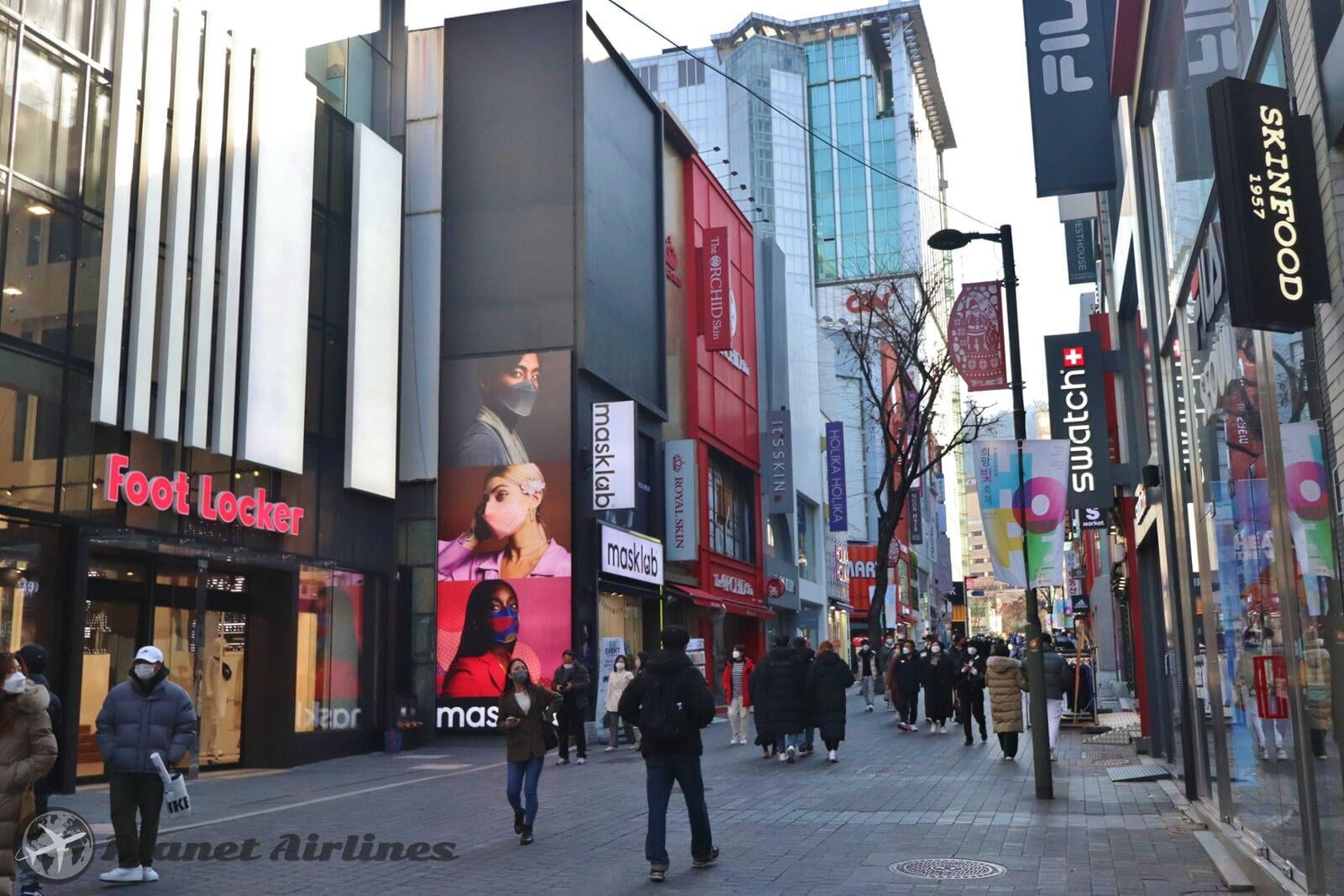



Seoul is not an expensive city to stay for tourists, however with the increase in popularity the country's wealth and a strong economy, prices are on the increase.
For the budget travellers there are numerous hostels and guesthouses offering cheap accommodation. specially in the area close to Itaewon.
Also Airbnb is a popular option now in South Korea.
Standard hotels within the city centre are expensive, so staying close to a metro station and a little further away from the centre is not a bad idea, it can cost €40-50 per night.
However, with a little planning and booking in advance away from the busy tourist seasons (Summer mostly), you can find hotels for around €30 also a night or less with private bathrooms, fridge and comfortable rooms.
✔️Tip: Itaewon is a popular area for budget hotels, hostels and backpacking accommodation where to also stay in a popular area with lots of nightlife.
At first, it might seem that there is not much to see when you arrive to Seoul , with it's imposing modern buildings, financial towers and a very commercial feel.
However, there is so much to see and do in this city, that some planning in advance will be key to maximise any stay! Central attractions are easy to see and do within a few days, like some of the palaces, gates and markets. However, travelling can take some time in Seoul, specially in the rush hour.
As a first time visitor to Seoul, a week would be a comfortable time to see most of the highlights in the city. However, if you are planning to see some of the places out of Seoul, taking transportation and to plan a trip to the DMZ (North Korean Perimeter) you might need a longer stay of 10 days to 2 weeks.
There is also a lot of entertainment in Seoul, so coming to visit over the weekend will give you the opportunity to experience how the Koreans enjoy their free time and go out.

Seoul Photo Slide 📷





















.png)